carbon credits
description: certificates that allow the holder to emit a certain amount of carbon dioxide, often traded as part of emissions reduction schemes
95 results

Living in a Material World: The Commodity Connection
by
Kevin Morrison
Published 15 Jul 2008
Voluntary Schemes As mentioned, there are now voluntary carbon offset schemes, where conscientious consumers buy carbon credits. Funds are then invested in forestry schemes, which mean planting more trees or looking after existing ones. But voluntary schemes are not regulated and they can be opaque. Consumers who want a carbon neutral lifestyle can install solar panels, put a wind turbine on the roof, sell the car and wear more clothes around the house in winter – or they can purchase carbon credits via carbon brokers such as The CarbonNeutral Company, Climate Care and co2balance.com to offset their carbon footprint.
…
The net loss in forest area is estimated at 7.3 million hectares, an area about the size of Sierra Leone or Panama, per year over the 2000 to 2005 period, compared with 8.9 million hectares between 1990 and 2000.41 Tree Hugging The focus on forests as a carbon sink comes at a time when there are more specialist investment companies owning forests for both timber production and carbon credits. In addition, timber companies are signing up to sustainable forestry development programmes to ensure that there is not an overexploitation of forests (although this is still a small number: only 7 % of forests are under sustainable management programmes and only 3 % are under certified management). Bettelheim and Swingland’s company Sustainable Forestry Management owns and leases forest area in Africa, Brazil, Australia and the United States. New Forests has forestry assets in Australia, CLIMATE | 149 New Zealand and the US to earn carbon credits. The Swiss-based Precious Woods owns and manages forests in Latin America and Gabon in Africa.
…
It is ironic that the negotiation took place in Indonesia, which in 2007 became the world’s third largest greenhouse gas emitter after the US and China, largely due to deforestation for the expansion of palm oil plantations to make biodiesel for Europe.45 Only one forestry offset project had been accepted through the Kyoto Protocol’s clean development mechanism (CDM) of a total of 765 projects approved by the CDM Executive Board, the mechanism’s governing body, up to September 2007.46 The CDM acts as a bridge between the carbon markets in the developed world and CO2 reduction initiatives in the developing world (that do not have their own cap-and-trade schemes). CDM approved projects earn carbon credits known as Certified Emissions Reductions (CERs) that can be traded for permits in the EU scheme, the Chicago voluntary market and other emissions markets subject to Kyoto obligations. There is also a scheme for developed countries to earn carbon credits from cleaner energy projects, known as Joint Implementation (JI). For instance, under both schemes, a company that emits 20 000 tonnes of CO2 equivalent per year could offset its emissions by planting a certain number of trees or investing in wind farms that would absorb the 20 000 tonnes of CO2 and earn tradable CERs.
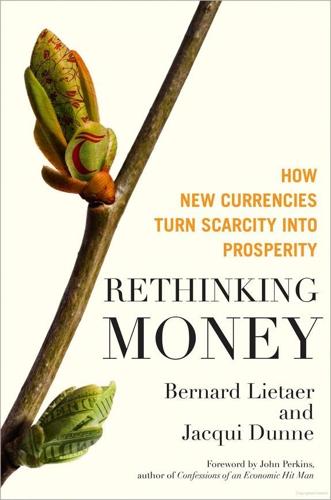
Rethinking Money: How New Currencies Turn Scarcity Into Prosperity
by
Bernard Lietaer
and
Jacqui Dunne
Published 4 Feb 2013
In short, those corporations would be buying not only Strategies for Banking 117 carbon credits but also market share in these new and emerging technologies. This would motivate these corporations to bid up the value of the CPX carbon credits at higher levels than the regular carbon credit market. The advantage to the farmers is that the bidding among corporations on the CPX would provide them with a higher value—a premium—for their carbon credits than the more anonymous conventional carbon credit markets. In terms of access to banking ser vices, estimates are that 3 billion people globally do not have a bank account.
…
Such sensors could include an automatic satellite positioning mechanism that identifies the exact location at which the carbon credits are being generated. Furthermore, the carbon credits could be independently verified by satellite, tracer systems, and/or soil sampling. The payment system for CPX exchanges could use highly advanced payment technologies, more secure and cost-effective on a decentralized basis than those currently used in centralized credit or debit card payment systems. Corporate buyers of the credits in the CPX system would be able to bid for the carbon credits of specific groups of producers and could exchange the seeds, fertilizers, or equipment they produce for farmers’ carbon credits. In short, those corporations would be buying not only Strategies for Banking 117 carbon credits but also market share in these new and emerging technologies.
…
The continuing advances in technology, such as the increasing ability to handle micropayments, further open the door to designing new currencies based on and targeted to specific goals. The possibilities are limitless. One random example to illustrate the point is that it’s now feasible to envision carbon-backed currencies. A carbon premium exchange (CPX) system could be an Internetbased information exchange system where additional data about the carbon credit producers are made available to potential buyers—for example, their exact location, type of soil used, volume of crops produced, and individual history of carbon sequestration. Since the verifiability of carbon sequestration is a key criterion for registration of projects under the clean development mechanism (CDM) of the Kyoto Protocol, information about the producers and their sequestering process would, in any case, need to be measured.
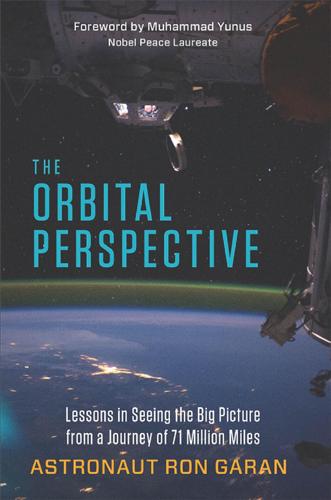
The Orbital Perspective: Lessons in Seeing the Big Picture From a Journey of 71 Million Miles
by
Astronaut Ron Garan
and
Muhammad Yunus
Published 2 Feb 2015
In 2007, we focused in on carbon credits, a United Nations system created under the Kyoto Protocol. We created Manna Energy Ltd. to combine our expertise in Rwanda with a carbon credits-fordrinking water concept we developed. Specifically, our desire was to find a way to fund projects that could provide access to clean water for the nearly one billion people around the world who do not have access to it. Over the course of the next six years, Evan led the Manna Energy Ltd. team that developed the work in Rwanda into the first United Nations program to be eligible for carbon credits for the purification of water.
…
It also led to an effort, which began in 2013, to provide water filters to the poorest 25 percent of the entire country of Rwanda—╉nearly 3 million people. All of these efforts were and are predominantly funded through the generation of carbon credits, which are issued and then sold to buyers only after impact is demonstrated, as opposed to promised. We also are trying to encourage a focus on maintaining existing projects rather than starting new ones. Therefore, the implementers of these carbon credit–╉funded projects do not get paid for putting them in; they get paid for demonstrated use, based on the number of clean liters of water that pass through the filters.
…
This creates a tremendous financial incentive to keep the filters working, to conduct effective training programs, and to implement processes to replace the filters when they’ve reached the end of their useful life. The high level of continual rigor that goes into the documentation required to verify the carbon credits leads to a significant boost in the accountability of the program. 112â•… L O O K I N G F O R WARD The collaboration in Kenya led to the first carbon credits from drinking water issued in the world. In 2013, DelAgua, a UK water testing company, purchased the Rwandan assets of Manna Energy Ltd. and is now investing up to $60 million in Rwanda. The Tubeho Neza (“Live Well”) project in Rwanda is being conducted by the newly formed DelAgua Health.
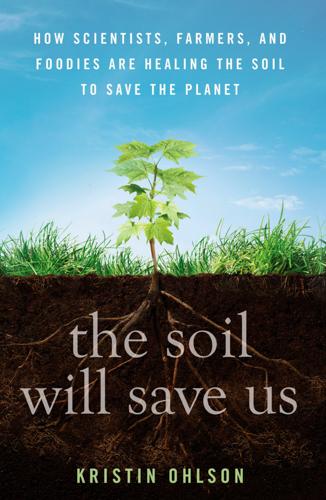
The Soil Will Save Us
by
Kristin Ohlson
Published 14 Oct 2014
At the end of the 10 years, the Palouse farmers may also be paid for the amount of carbon they built in their soil over the decade. Several investment companies have expressed interest in buying carbon credits from the Palouse farmers in the future. In fact, the farmers will “grow” carbon just as they grow wheat: as a product they can take to market. All of this makes my head spin a bit, but Adam Chambers tells me to think of the carbon credits as just another commodity—like an apple. EKO and the other investment companies will buy these apples in bulk from the Palouse farmers and then, at some point, will probably turn around and sell them in the voluntary marketplace.
…
A handful of nonprofits develop the protocols on which these credits are based, putting together the best research from peer-reviewed studies on the effects of a certain practice, writing up comprehensive descriptions of what the land managers have to do, then verifying every year to see if they’re are following the program. As of 2012, the voluntary market in the United States had issued more than $100 million in carbon credits. The compliance markets are driven by government regulation of greenhouse gases, which require large GHG-discharging entities to reduce their emissions or buy credits that offset their emissions. Significant compliance markets include California’s cap-and-trade program (which was just getting started in 2013) and the European Union’s Emissions Trading System.
…
Chambers is on the service’s Air Quality and Atmospheric Change Team, and he works on its Conservation Innovation Grant (CIG) program. Nine CIGs have protocols that either reduce greenhouse gases in agriculture or build soil carbon, provide farmers and ranchers with funds to make the transition, and then help them line up customers who will buy carbon credits for the avoided or stored carbon. For one of these projects, the NCRS has partnered with Ducks Unlimited, a venerable organization of hunting enthusiasts that got its start during the Dust Bowl era—a catastrophic time for bird populations—and whose slogan is “Filling the skies with waterfowl today, tomorrow, and forever.”

Who Owns the Future?
by
Jaron Lanier
Published 6 May 2013
The very idea of economics is based on a feedback model that is fast enough to be relevant to one’s decisions. Long-term global outcomes are not fast enough. Carbon credits attempt to bridge that gap. However, in the context of today’s dysfunctional, one-sided networked finance, there is a risk that catastrophic speculation and derivatives bundling of carbon credits would overwhelm the original purpose, should those credits become more widely used. On the other hand, absent those scams, carbon credits will have a hard time gaining traction. Governments can introduce exceptional mechanisms like carbon credits, but these don’t seem to rise to the forefront of investment strategies in their own right.
…
What should happen instead is that information technology should create a persistent expansion of markets by monetizing more and more information, enshrining the potential for non-zero-sum thinking. Carbon Copies Ruin Carbon Credits If economics were perfect, then human activity would be aligned with human interests—or at least that ideal is the only imaginable one for economics. So when human activities are obviously not well aligned with human interests, it’s worth searching for sources of illusion that might distance economic motivations from reality. I suspect that Sirenic effects are already creating illusions that dilute the potential benefits of carbon credits, for example. Such credits are one approach to making markets rally to fundamental needs—as opposed to random projects like building empty suburbs.
…
Governments can introduce exceptional mechanisms like carbon credits, but these don’t seem to rise to the forefront of investment strategies in their own right. The reason why is that “scammy” investments offer better returns, and for carbon credits to compete, they’d have to become scammy, too, but they benefit from too many altruistic guardians to allow that to happen. Therefore, the prominence and influence of carbon credits are limited. How Fighting “Fraud” Might Also Fight “Scams” Exotic and experimental ideas in finance are not necessarily scammy. Betting on the climate has a place. In my previous book I advocated the exploration of new exotic financial instruments for just this reason. We need them. But we need a more honest and sustainable approach to networked economics even more—an approach that could bring about the very positive side benefit of subduing the scams that blind.
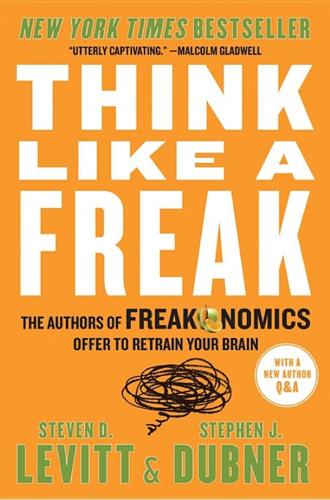
Think Like a Freak
by
Steven D. Levitt
and
Stephen J. Dubner
Published 11 May 2014
So the UN offered a whopping bounty of 11,700 carbon credits for every ton of HFC-23 that was destroyed rather than released into the atmosphere. Can you guess what happened next? Factories around the world, especially in China and India, began to churn out extra HCFC-22 in order to generate extra HFC-23 so they could rake in the cash. As an official with the Environmental Investigation Agency (EIA) put it: “The evidence is overwhelming that manufacturers are creating excess HFC-23 simply to destroy it and earn carbon credits.” The average factory earned more than $20 million a year by selling carbon credits for HFC-23. Angry and embarrassed, the UN changed the rules of the program to curb the abuse; several carbon markets banned the HFC-23 credits, making it harder for the factories to find buyers.
…
Eskeland and Tarhan Feyzioglu, “Rationing Can Backfire: The Day Without a Car in Mexico City,” World Bank Policy Research Dept., December 1995. 131 HFC-23 AND PAYING POLLUTERS TO POLLUTE: “Phasing Out of HFC-23 Projects,” Verified Carbon Standard, January 1, 2014; “Explosion of HFC-23 Super Greenhouse Gases Is Expected,” Environmental Investigation Agency press release, June 24, 2013; EIA, “Two Billion Tonne Climate Bomb: How to Defuse the HFC-23 Problem,” June 2013; “U.N. CDM Acts to Halt Flow of Millions of Suspect HFC-23 Carbon Credits”; Elisabeth Rosenthal and Andrew W. Lehren, “Profits on Carbon Credits Drive Output of a Harmful Gas,” New York Times, August 8, 2012. 133 “THE COBRA EFFECT”: See Stephen J. Dubner, “The Cobra Effect,” Freakonomics Radio, October 11, 2012; Horst Siebert, Der Kobra-Effekt: Wie man Irrwege der Wirtschaftspolitik vermeidet (Deutsche Verlags-Anstalt, 2001); Sipho Kings, “Catch 60 Rats, Win a Phone,” Mail & Guardian (South Africa), October 26, 2012. / 133 As Mark Twain once wrote . . . : See Mark Twain, Mark Twain’s Own Autobiography: The Chapters from the North American Review, ed.
…
In order to skirt the license-plate ban, a lot of people went out and bought a second car—many of which were older, cheaper gas guzzlers. In another case, the United Nations set up an incentive plan to compensate manufacturers for curtailing the pollutants they released into the atmosphere. The payments, in the form of carbon credits that could be sold on the open market, were indexed to the environmental harm of each pollutant. For every ton of carbon dioxide a factory eliminated, it would receive one credit. Other pollutants were far more remunerative: methane (21 credits), nitrous oxide (310), and, near the top of the list, something called hydrofluorocarbon-23, or HFC-23.

Hope Dies Last: Visionary People Across the World, Fighting to Find Us a Future
by
Alan Weisman
Published 21 Apr 2025
Nevertheless, millions in venture capital have backed schemes to accelerate that process, by funding startups to grow kelp from floats in the open ocean, then sink it—and then sell carbon credits to companies seeking to offset their fossil-fueled exhaust. The stated goal of one, Running Tide Technologies, was to remove a billion or more tons of carbon every year. “What we have to do is run the oil industry in reverse,” its CEO told NPR. “The kelp will sink and essentially become part of the ocean floor. That gets you millions of years of sequestration, making oil”—meaning it will be buried and, over eons, be compressed into liquid hydrocarbon again. Its carbon credits customers included Shopify, Stripe, and the Chan Zuckerberg Initiative.
…
Eight years earlier, Google had announced achieving carbon neutrality by purchasing enough carbon credits to offset its operations, employee travel, construction, and server maintenance. It was an earnest step, although the value of most carbon offsets has since been challenged—such as for preserving forests on land trusts that never would have been cut anyway. Google’s chief offset investment was capturing methane from landfills and pig farms to burn for fuel, with the rationale that the resulting CO2 emissions are less potent than releasing straight methane. Selling carbon credits involving industrial swine operations, however, becomes a climatic Ponzi scheme, as demand for such offsets encourages more of them, producing more emissions and requiring more synthetically fertilized grain to fatten more hogs.
…
“Water, Energy and Food Crisis Threatening the Coastal Desert Villages of the Comcaac (Seri) Community.” Gary Nabhan webpage. March 12, 2021. https://www.garynabhan.com/news/2021/03/water-energy-and-food-crises-that-threaten. Jones, Nicola. “Why the Market for ‘Blue Carbon’ Credits May Be Poised to Take Off.” Yale Environment 360, April 13, 2021. https://e360.yale.edu/features/why-the-market-for-blue-carbon-credits-may-be-poised-to-take-off. Judkis, Maura. “An Ocean-Obsessed Spanish Chef Brings Plankton to the Plate—and Makes It Glow.” Washington Post, November 4, 2016. https://www.washingtonpost.com/news/food/wp/2016/11/04/an-ocean-obsessed-spanish-chef-brings-plankton-to-the-plate-and-makes-it-glow.
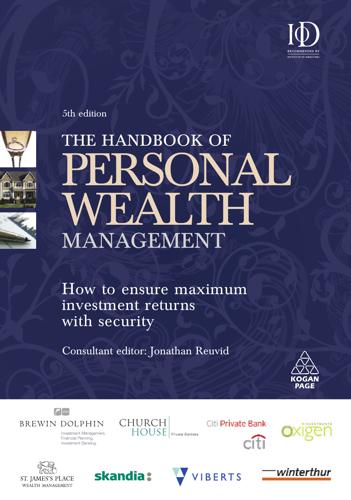
The Handbook of Personal Wealth Management
by
Reuvid, Jonathan.
Published 30 Oct 2011
The range of returns in South American markets was between 12 per cent and 23 per cent before tax in 2005, according to one survey.9 The returns in Chile have since fallen, under the influence of the perceived lessening of risks in that market as reported in recent successive World Bank and OECD reports. _______________________________________ CURRENT OPPORTUNITIES IN FORESTRY 85 ឣ New revenue sources from forestry Carbon credits New revenue sources derived from forestry include the sale of carbon credits arising from reforestation or afforestation projects, whether under the Kyoto rules or under standards set for voluntary emission rights (VERs) on exchanges such as the Chicago Climate Exchange (CCX). Most of the forestry projects giving rise to carbon credits to date have been in emerging economies, often those with severely depleted or threatened forests. A 2006 study of the voluntary carbon market found a vast range of prices.
…
They also have lower volatility although values of commercial woodlands are affected significantly by timber prices. These are unusual characteristics compared with other asset classes, hence offering benefits to many institutional and private investors that are further explained below. Finally, new environmental markets such as carbon credits, biomass and windfarms are rapidly emerging, reinforcing future forestry income and values. Special qualities of forestry investment Portfolio diversification One major feature of forestry investments is that they have been shown to have a non-correlation with stocks and bonds, as evidenced by Table 2.3.1.
…
See remarks by Professor F Cubbage, N Carolina State University, 2008 at IQPC Conference, Sao Paulo, March 2008. 9. Ibid. 10. Hamilton, Bayon, Turner & Higgins, ‘State of the Voluntary Carbon Markets’, within ‘Ecosystem Marketplace & New Carbon Finance’, Katoomba Group, 2007. 11. Ibid. 12. Jacek P Siry, ‘Carbon credits and forest certification’, International Forest Investment Conference, London, November 2008, organized by University of Georgia. The sample project assumed a discount rate of 6 per cent. Disclaimers The views and information in this chapter are given for general guidance purposes only. Fountains Plc accepts no responsibility for their accuracy.

This Changes Everything: Capitalism vs. The Climate
by
Naomi Klein
Published 15 Sep 2014
In the bush of Papua New Guinea, carbon deals are known as “sky money”; in Madagascar, where the promised wealth has proved as ephemeral as the product being traded, the Betsimisaraka people talk of strangers who are “selling the wind.”66 A notorious carbon cowboy is Australian David Nilsson, who runs a particularly fly-by-night operation; in one recent incarnation, his carbon credit enterprise reportedly consisted only of an answering service and a web domain. After Nilsson tried to convince the Matsés people in Peru to sign away their land rights in exchange for promises of billions in revenues from carbon credits, a coalition of Indigenous people in the Amazon Basin called for Nilsson to be expelled from the country. And they alleged that Nilsson’s pitch was “similar to 100 other carbon projects” which were “dividing our people with non-existent illusions of being millionaires.”VIII Some Indigenous leaders even say that it is easier to deal with big oil and mining companies, because at least people understand who these companies are and what they want; less so when the organization after your land is a virtuous-seeming NGO and the product it is trying to purchase is something that cannot be seen or touched.67 This points to a broader problem with offsets, one that reaches beyond the official trading systems and into a web of voluntary arrangements administered by large conservation groups in order to unofficially “offset” the emissions of big polluters.
…
That left little incentive to shift away from dirty energy or to buy carbon credits. Which helps explain why, in 2012, coal’s share of the U.K.’s electricity production rose by more than 30 percent, while in Germany, as we have already seen, emissions from coal went up despite the country’s rapid embrace of renewable power. Meanwhile, the United Nations Clean Development Mechanism has fared even worse: indeed it has “essentially collapsed,” in the words of a report commissioned by the U.N. itself. “Weak emissions targets and the economic downturn in wealthy nations resulted in a 99 percent decline in carbon credit prices between 2008 and 2013,” explains Oscar Reyes, an expert on climate finance at the Institute for Policy Studies.74 This is a particularly extreme example of the boom-and-bust cycle of markets, which are volatile and high-risk by nature.
…
And there are plenty of signs that climate change will be no exception—that, rather than sparking solutions that have a real chance of preventing catastrophic warming and protecting us from inevitable disasters, the crisis will once again be seized upon to hand over yet more resources to the 1 percent. You can see the early stages of this process already. Communal forests around the world are being turned into privatized tree farms and preserves so their owners can collect something called “carbon credits,” a lucrative scam I’ll explore later. There is a booming trade in “weather futures,” allowing companies and banks to gamble on changes in the weather as if deadly disasters were a game on a Vegas craps table (between 2005 and 2006 the weather derivatives market jumped nearly fivefold, from $9.7 billion to $45.2 billion).
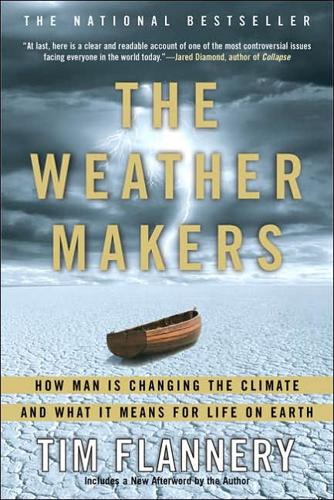
The Weather Makers: How Man Is Changing the Climate and What It Means for Life on Earth
by
Tim Flannery
Published 10 Jan 2001
A case can be made that developing a new global currency from the top down is too risky to be acceptable. After all, the foundation of any currency is trust—in this case trust that the seller of the carbon credit will do what is required to abate their carbon emissions. What real guarantee do we have that forests will be planted and cared for, or that polluting industrial infrastructure will be dismantled as a result of the sale of carbon credits? Even with goodwill on all sides such schemes may fail because nations such as Russia, where credits may be spent, do not have the legal and regulatory institutions in place to ensure compliance.
…
The matter becomes complex when the economies of the nations are taken into account, for the eastern European states have suffered economic ruin since 1990 and are producing 25 per cent less CO2 than they were then. With their Kyoto carbon budgets set at 8 per cent less than their 1990 levels, they have valuable carbon credits to trade. These credits, which do nothing to diminish climate change, are known as ‘hot air’. They constitute a substantial waste in dollars and opportunities to abate emissions. There is another issue here, as many economists argue that the ex-communist countries should not be granted a steady stream of carbon dollars solely on the basis of poor economic performance.
…
It’s easy to get angry at such a self-interested, muddled approach to negotiations, but we must remember that the outcome may have been nothing more than a fair trade deal. Even so, Australia looks set to reap a bitter harvest, for its stock traders are missing out on an estimated $150 million per year because carbon credits are not being traded on Australian trading floors. Consider too that Japan—which purchases Australian coal—must now buy credits to offset emissions that result from burning that coal, a cost that will doubtless be passed on to Australian coal miners; but because Australia has not ratified Kyoto, no credits can be created there.
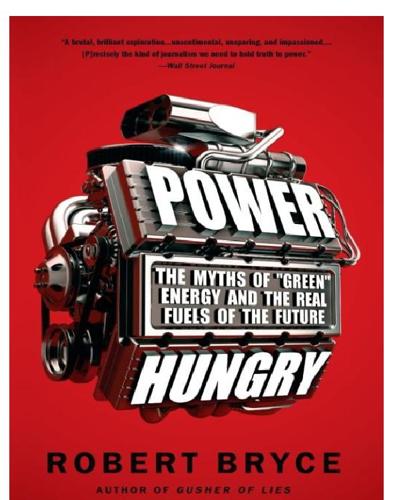
Power Hungry: The Myths of "Green" Energy and the Real Fuels of the Future
by
Robert Bryce
Published 26 Apr 2011
The promoters of these indulgences promise buyers that their money will go to “green” projects, such as a system that captures methane gas from a Chinese landfill, or perhaps the construction of a dam in India.24 But by 2008, the market for carbon indulgences had grown to some $54 million per year, and the Federal Trade Commission was advising consumers to be wary of the potential for fraud when buying them.25 And in late 2009, a British travel company, Responsibletravel. com, announced that it had quit offering carbon offsets because, in the words of the company’s founder, they had become the equivalent of a “medieval pardon” that allowed buyers “to continue polluting.”26 Along with carbon credits, Americans have been barraged with claims about the desirability of being “carbon neutral.” In 2007, Al Gore’s followers held Live Earth, a global series of concerts that claimed it was “carbon neutral” because, among other things, it had purchased carbon credits to offset the air travel done by concert organizers and performers. 27 At the 2008 Democratic National Convention, the Democratic National Committee created a “green delegate challenge” that asked each of the 5,000 delegates who were going to the convention in Denver to pay $7.50 for a “carbon offset.”
…
And yet, over the past few years, many Americans have become increasingly ambivalent about their energy use. In some circles, people who drive SUVs are subjected to ridicule; conversely, fuel-efficient cars such as the Toyota Prius confer on their drivers a certain amount of environmental cachet, or “eco-bling.” The growing Western obsession with carbon dioxide has even led some consumers to buy “carbon credits”—a type of get-out-of-jail-free card, an environmental indulgence—that theoretically allows them to offset a certain amount of the carbon dioxide they are responsible for emitting. The promoters of these indulgences promise buyers that their money will go to “green” projects, such as a system that captures methane gas from a Chinese landfill, or perhaps the construction of a dam in India.24 But by 2008, the market for carbon indulgences had grown to some $54 million per year, and the Federal Trade Commission was advising consumers to be wary of the potential for fraud when buying them.25 And in late 2009, a British travel company, Responsibletravel. com, announced that it had quit offering carbon offsets because, in the words of the company’s founder, they had become the equivalent of a “medieval pardon” that allowed buyers “to continue polluting.”26 Along with carbon credits, Americans have been barraged with claims about the desirability of being “carbon neutral.”
…
The plot was to be renamed the Vatican Climate Forest, and once the trees were in place, the Vatican would, in theory, have an atmospheric dispensation for all the carbon dioxide emissions that came from its cars, its offices, and, presumably, the hallowed lungs of the Holy Father himself, Pope Benedict XVI. The Times quoted a Vatican official, Monsignor Melchor Sánchez de Toca Alameda, who averred that buying carbon credits was akin to penance. The monsignor did not advocate sackcloth and ashes, but he implied that believers may avoid eternal carbon damnation by “not using heating and not driving a car, or one can do penance by intervening to offset emissions, in this case by planting trees.”29 Of course, there’s no sin in planting trees.
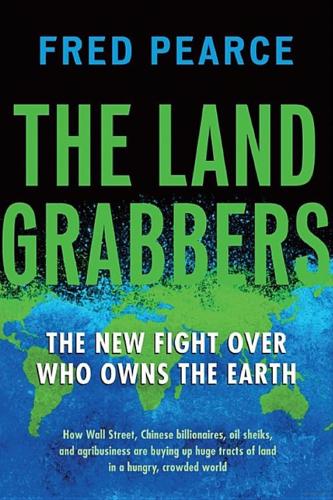
The Land Grabbers: The New Fight Over Who Owns the Earth
by
Fred Pearce
Published 28 May 2012
He came and brought many after him. As the logging concessions go east, a new generation of Western forest entrepreneurs is moving in. They want to make money from conserving carbon, either by planting new forests or by “protecting” natural forests. Under international climate treaties, such initiatives can earn them carbon credits worth between ten and twenty dollars per ton. This is good news for the atmosphere, of course. But the danger is that, unless properly done, it could be bad news for the people whose land is taken. And the companies, whether their motives are altruistic or strictly commercial, can get caught in the middle.
…
Take the case of the New Forests Company, a London-based company with leases on 67,000 acres for planting forests in Uganda, Tanzania, Mozambique, and Rwanda. In Uganda, it found itself taking over land cleared of people by the national government’s Forestry Authority. The people and their farms were to be replaced with pine and eucalyptus trees. The company hoped to earn up to $2 million a year by selling the carbon credits under the Kyoto Protocol. Oxfam, the aid charity, calculated that some twenty thousand people were evicted to make way for the company in Uganda, mostly in 2010. Nobody much disagrees with that, but the government and New Forests insist the people were squatters who had no right to be there.
…
The company said it had been assured that all the evictions were “legal, voluntary and peaceful.” But, confronted with evidence that villagers were forcibly moved and their homes were torched, government officials told the New York Times this may have happened. Surely, whatever the law may say, they deserved better? The Kyoto Protocol gives carbon credits for planting trees. Its successor will give credits simply for protecting natural forests threatened with destruction. The UN’s international climate talks on cutting industrial carbon emissions may have stalled since the 2009 debacle in Copenhagen, but progress has been faster on a global deal known as Reduced Emissions from Deforestation and Forest Degradation, or REDD.

The Challenge for Africa
by
Wangari Maathai
Published 6 Apr 2009
In this way, nations such as the DRC with large tracts of intact forest would receive remuneration for protecting their forests, so that carbon is not released into the atmosphere. Ongoing research indicates that, assuming a market rate of $4 per metric ton of carbon dioxide, the DRC could generate around $200 million a year by selling carbon credits. According to the U.S.-based Association for Tropical Biology and Conservation, the forests found in the fifteen countries that are part of the Coalition for Rainforest Nations could have a value in carbon credits of over $1 trillion. Private companies have an opportunity to act as good global citizens and help existing forests by buying credits to offset their carbon emissions as part of their corporate social responsibility policies.
…
A mechanism is being developed that would compensate developing countries that have significant forest cover if they slow rates of forest clearing, reverse these trends, and manage these forests sustainably. While the details of establishing, regulating, and ensuring the fairness and transparency of a global market for such carbon credits are not fully resolved, it is an enterprise I support. The markets, though, must serve the forests, and not solely the other way around. It is also essential that any such system for selling carbon credits be part of a national framework and coherent policy of sustainable use and conservation, rather than a mishmash of piecemeal actions that do not protect the ecosystem as a whole, or provide a front for further indiscriminate exploitation of the natural resources.

50 Future Ideas You Really Need to Know
by
Richard Watson
Published 5 Nov 2013
In theory, this should be easy; in practice, it’s not. For example, the journal Climate Policy found that 60 percent of clean energy or offset projects would have happened without carbon trading. Moreover, 15–20 percent of carbon credits should not have been issued because the people behind the projects failed to produce proof that a renewable energy project would not exist without the funds created by the sale of carbon credits to polluters. Each of these ideas is incredibly expensive and many would say simplistic or even quite barmy, but then again, that’s how most radical ideas appear at first. Some scientists also say that it’s already too late to put any of these practices into place.
…
Other ideas include using the oceans to create clouds—scooping up seawater and spraying it into the air—or pumping nutrient-rich water from the bottom of the oceans to block sunlight, as well as various forms of carbon capture (sequestration). Or perhaps we can create artificial forests to remove CO2 from our atmosphere, or build a giant chemistry set to deal with ocean acidification or stored heat? The carbon credit fiasco Not so long ago, carbon trading didn’t exist. Now we have a whole industry based on the idea that you can precisely count offsets and that firms should be allowed to trade in pollution. One job that didn’t exist in the past is an emissions assessor. This is the person who visits a site to determine whether a promised emission reduction or offset package stacks up.

Meat: A Benign Extravagance
by
Simon Fairlie
Published 14 Jun 2010
Credits for the Credulous? While experiments in carbon farming are to be welcomed, I am sceptical about the wisdom of extending this welcome to schemes for selling carbon credits. There is no guarantee that these are any less likely to attract con artists and sellers of indulgences than the other carbon offset schemes which have surfaced in the last ten years – indeed judging by the Carbon Farmers of America, they are already on the case. Soil carbon credits are handicapped by a number of difficulties, not least the huge expense of monitoring various different types of carbon down to a depth of at least a metre.
…
The USA, at the time of writing, has yet to sign the Protocol, but it already has a burgeoning carbon farming offset market: the Chicago Climate Exchange Market (in co-operation with the National Farmers Union and Iowa Farm Bureau) is paying farmers up to $3 per acre for sequestering carbon with funds derived from selling carbon credits to industrial companies.5 A company trading under the stirring title Carbon Farmers of America pays farmers $6 for every tonne of carbon they sequester in their soil. The money is raised by selling ‘Carbon Sinks’ costing $25 apiece to individuals and businesses. For $2,500 you can buy a ‘Family Carbon Sink Package’; for a mere $175 you can ‘turn your vehicle into a carbon sink’; for an unspecified sum you can certify your company by buying a Business Carbon Sink Package.6 Amongst scientists, there is widespread, probably universal, agreement that agricultural soils can sequester carbon in much the same way that tree cover can, and that the potential for them to do so in some circumstances is not negligible.
…
It is a basic fact of grass farming that if you take hay or silage off a field without adding nutrients you deplete it; and if you pasture animals on a field, especially if you are also feeding them hay or other feed, then you are likely to enrich it.69 It is for this reason that (as some farmers have pointed out) a farmer who has been pasturing livestock for years and whose soil is already saturated with carbon won’t get a cent from carbon accreditation schemes. All of this threatens to make a nonsense of any carbon credit scheme that doesn’t adopt a whole systems approach. Christine Jones’ Australian scheme allows farmers ‘to register up to four 20 hectare so-called Defined Sequestration Areas on any portion of their property’. If I was a stock farmer entering such a scheme, with say 80 hectares of established hay meadows and 80 hectares of pasture, I would register my meadows as sequestration areas, and leave the pasture out.
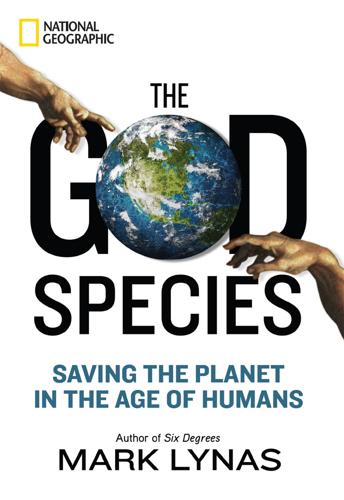
The God Species: Saving the Planet in the Age of Humans
by
Mark Lynas
Published 3 Oct 2011
Another option is to remove the trading elements from cap and trade schemes like the European Emissions Trading Scheme, shifting the system into a simple auction of carbon credits with the proceeds allocated to an independently administered energy RD&D trust fund. So far the evidence from Europe is that its flagship carbon-trading scheme has done little or nothing to reduce emissions, while allowing the big energy corporations to pocket billions in windfall profits because pliable politicians handed them carbon credits for free rather than auctioning them.80 Never mind the “polluter pays” principle: In this case the polluter got paid. This is not just iniquitous; it represents a serious opportunity cost, as the money went into the pockets of shareholders rather than being usefully invested.
…
Carbon offsetting is a useful short-term palliative that the Green movement has discredited without good reason, harming both the climate and the interests of poor people in the process. Some Green groups have also made it very difficult to use the climate-change negotiations as a way to save the world’s forests by insisting that rain forest protection should not be eligible for carbon credits. In addition, environmental and development NGOs in general have been much too easy on rapidly emerging big carbon emitters like China and India, whose governments need to be pressed or assisted to eschew coal in favor of cleaner alternatives. Blaming the rich countries alone for climate change may tick all the right ideological boxes, but it is far from being the full story.
…
But the efficiency of our use of water can and should increase, so that we use less of it at any one time. Israel has shown the way forward by recycling household water for use in agriculture on a massive scale: More than 80 percent of waste water is recycled for use in producing food.42 It might also be possible for the concept of carbon markets to be extended into the realm of water. Just as carbon credits represent a virtual trade in greenhouse gas permits (no one actually moves tonnes of real carbon dioxide around when they buy or sell, although they may change the site of its emission), so the virtual trade in water might be enhanced by the trading of water credits so that arid regions that save on using water in farming or industry get a financial bonus for helping the world meet the water boundary.
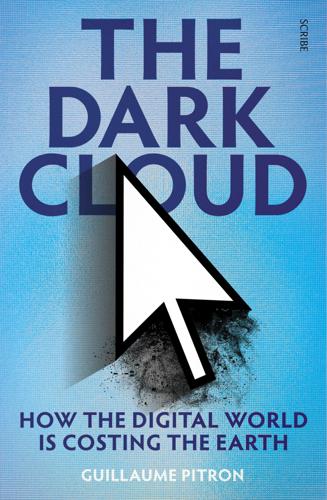
The Dark Cloud: How the Digital World Is Costing the Earth
by
Guillaume Pitron
Published 14 Jun 2023
Twitter’s number is meant to be around 21 per cent — bear that in mind the next time you tweet. Until Virginia’s energy mix becomes 100 per cent renewable between now and 2045 or 2050, as urged by a recent Act, the behemoths of the digital economy can offset their carbon dioxide emissions using ‘carbon credits’.70 Created in the US in 1998, and then in Europe in 2001, the concept is based on the premise that the electrons produced from solar or wind energy are indistinguishable from those from a coal-fired or nuclear power plant once they have entered the electrical grid. But a producer of green energy can — through a specialised intermediary — sell a document to a company wishing to link, virtually, their electricity consumption to a sustainable source of energy.
…
The cumulative credits make it possible for companies such as Netflix to proclaim that they have achieved carbon neutrality.71 The streaming platform is undeniably consuming coal, yet this game of accounting entries makes it possible to erase, at least on paper, its carbon footprint. It is greenwashing in its purest form, and in the world of data centres, one of the rare experts daring enough to tell it like it is, Philippe Luce, calls it ‘intellectual and moral fraud’.72 Nevertheless, the intention behind carbon credits is good; by buying green energy, we are financially supporting their development. But surely the price tag should reflect that intention. In the US, a credit costs around 70 cents per megawatt hour, which is too little to seriously support the shift to green sources of electricity. As it happens, an authority on the matter has already stated that the existence or the absence of these credits have absolutely no bearing on the development of renewables.73 In the meantime, ‘cheap green electricity’ stands out as an excellent way for companies such as Netflix to delay their energy transition.
…
One example is reported by a trade journalist after a visit to a data centre in Saint-Denis, north of Paris, in 2015. ‘There were solar panels on the roof of the data centre. And when I asked what the electricity it generated was used for, the answer was: “Given how much energy the thing needs, there’s just enough to power a coffee machine.”’10 Between window-dressing and buying carbon credits, it is hard to accurately gauge the sincerity of stakeholders. One thing is certain: this transformation is very real, but it is not nearly as awe-inspiring as the industry would have you believe. ‘Google recently stated that it uses 100 per cent renewable energy, but we know for a fact that that is not possible’, says the journalist trenchantly.11 ‘There is a lot of ill will, lip service, bad intentions, even’, Philippe Luce of Institut Datacenter admitted during our interview.
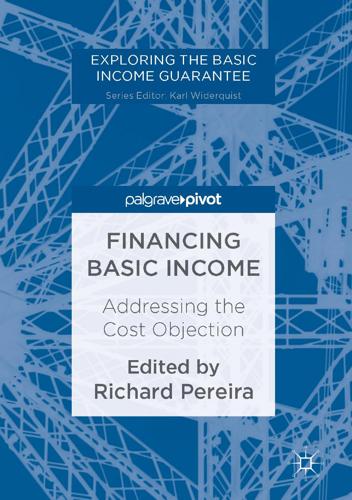
Financing Basic Income: Addressing the Cost Objection
by
Richard Pereira
Published 5 Jul 2017
This royalty does not come close to covering road subsidies and direct government contributions to the industry. The report estimates $50 million of potential revenue based on the annual production of $1.8 billion at a royalty of 2.7%. Fitzgerald (2013: 36) claims, “In years to come these forests will earn carbon credits and significantly increase in value according to their carbon sequestering capacity. The battle over who earns these carbon credits will be a hot issue”. Gambling According to the TRRA report, 198,725 poker machines operate nationwide, delivering a net gambling surplus of $18.45 billion (2009–2010). The Victoria government has identified at least $50,000 per poker machine as economic rent, since the rights are auctioned for $5,500 and the machine makes $80,000 per year. $50,000 out of $80,000 is 62.5% economic rent.

Blockchain Revolution: How the Technology Behind Bitcoin Is Changing Money, Business, and the World
by
Don Tapscott
and
Alex Tapscott
Published 9 May 2016
Efficient pricing algorithms compute credits and debits in real time, and green organizations capture and track their carbon credits on the ledger and roll them into an exchange. What if we created a cap-and-trade system for people? Surely we need more than our institutions to change their behavior! Personal carbon trading would work through the Internet of Things. Sensors, detectors, and instrumentation would measure your water heater, dishwasher, and household thermostat in real time and inform you of your carbon credits balance. At the same time, you could earn credits by acting in practical, sustainable ways. If you added an array of solar panels to your roof, you would earn credits by returning excess energy to the grid.
…
We received a lot of familial support. IT executive Bob Tapscott spent many days downloading and getting under the hood of the entire bitcoin blockchain to give us firsthand insights on some of the technical issues. Technology entrepreneur Bill Tapscott came up with the revolutionary idea of a blockchain-based personal carbon credit trading system, and technology executive Niki Tapscott and her husband, financial analyst James Leo, have been great sounding boards throughout. Katherine MacLellan of the Tapscott Group (conveniently a lawyer) tackled some of the tougher issues around smart contracts as well as managing the interview process.
…
Now imagine the opportunities that arise from the ability to search the World Wide Ledger, a decentralized database of much of the world’s structured information. Who sold which discovery to whom? At what price? Who owns this intellectual property? Who is qualified to handle this project? What medical skills does our hospital have on staff? Who performed what type of surgery with what outcomes? How many carbon credits has this company saved? Which suppliers have experience in China? What subcontractors delivered on time and on budget according to their smart contracts? The results of these queries won’t be résumés, advertising links, or other pushed content; they’ll be transaction histories, proven track records of individuals and enterprises, ranked perhaps by reputation score.
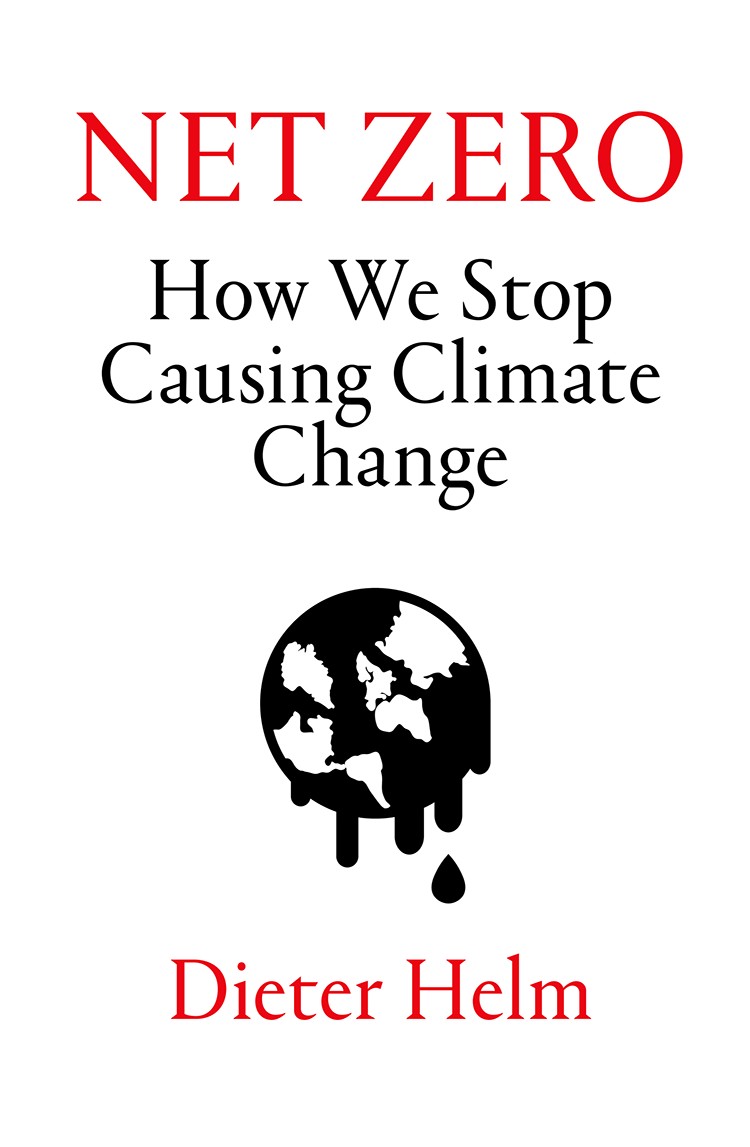
Net Zero: How We Stop Causing Climate Change
by
Dieter Helm
Published 2 Sep 2020
The 40 per cent tariff on beef imports into the EU discussed in the context of a ‘no deal’ Brexit, for example, is not based on a precise measurement of the impacts on the domestic market, and there is nothing precise about Chinese, US and European tariffs on manufacturing goods. Approximation, not precision, is all that is required. For very large industrial plants, the emissions in the country of origin should in any event be measured, as they have to be here. A UK steel mill has to buy carbon credits for the EU ETS, and it should also pay a carbon floor price. The importer would fill in these details at the port. Compared with the normal customs requirements (and VAT administration), this is pretty trivial as an administrative expense, and proportionately very low, since cargoes of the big 5 tend to be high-value.
…
A country might try to offset the outstanding emissions over and above the net zero levels that remained by buying international credits. This is the third option. The UK government could add up UK emissions, see how far they exceed the carbon budget and buy emissions reductions overseas accordingly. This might be an efficient way forward: it could be cheaper to pay others to do the decarbonisation for it. International carbon credits appeal to economists, who look for these least-cost opportunities. There is a global supply cost schedule of possible emissions reductions, and the optimal economic answer is to work down this curve for any given target. For example, it might be better to close a coal mine or a coal power station with a low thermal efficiency in China or India before closing Drax.
…
It would be a new world. You and I would, of course, pay this carbon price in our bills, but only if we bought electricity generated from fossil fuels. There would be a number of intermediate cases, like biomass wood pellets burnt in converted coal power stations. The inputs should come with a carbon credit for the temporary sequestration by the crop, but the carbon price for the energy used to pelletise the wood and dry the pellets, the diesel to truck the pellets to the coast, the shipping emissions, and the energy required to keep the pellets cool to prevent combustion while in storage would all be added.

Future Files: A Brief History of the Next 50 Years
by
Richard Watson
Published 1 Jan 2008
Better still, perhaps drivers who repeatedly have accidents will be forced to drive certain types of car or be demoted to L-plates and small vehicles until they establish a safe driving record. Can’t see the road for the trees Thirty years hence, one can imagine a situation where drivers of petrol- or gasoline-fueled cars will be forced to pay for the oxygen the engine uses as well as for the fuel. This is already happening, in a sense, with carbon credits being given to countries such as Brazil that own “oxygen reserves”. The desire to be green has trickled down from countries through companies to the private car owner. There are now green car loans, green car hire companies, and even green car insurance. While most of this is gimmickry gone mad, biofuels and hybrid cars (and, ultimately, hydrogen-powered cars) are here already or are coming over the next few years or so.
…
In the middle of all this, we will continue to see a polarization between economy and luxury travel, although both segments will become more sustainable. You can see this already with the growth of eco-luxe resorts, although in my experience the “eco” bit can be rather superficial and poorly thought through. For example, I recently went on holiday to an eco-resort in the Pacific. I offset my guilt with some carbon credits, sat back, and relaxed. It was fantastic, it was sustainable — and it was a country run by a military dictatorship. Stick that little fact in your locally grown organic salad. What else are we seeing that’s relatively new? Trends like simplicity and back to basics have spawned fads such as glamorous camp- Travel and Tourism 273 ing (glamping), luxury backpacking (flashpacking), and wild swimming (taking a dip in various rivers and streams).
…
A 311 Index ‘O’ Garage 170 3D printers 56 accelerated education 57 accidents 159, 161–6, 173, 246 ACNielsen 126 adaptive cruise control 165 Adeg Aktiv 50+ 208 advertising 115–16, 117, 119 Africa 70, 89, 129, 174, 221, 245, 270, 275, 290, 301 ageing 1, 10, 54, 69, 93, 139, 147–8, 164, 188, 202, 208, 221, 228–9, 237, 239, 251, 261, 292, 295, 297–8 airborne networks 56 airlines 272 allergies 196–7, 234, 236 Alliance Against Urban 4x4s 171 alternative energy 173 alternative futures viii alternative medicine 244–5 alternative technology 151 amateur production 111–12 Amazon 32, 113–14, 121 American Apparel 207 American Express 127–8 androids 55 Angola 77 anti-ageing drugs 231, 237 anti-ageing foods 188 anti-ageing surgery 2, 237 antibiotics 251 anxiety 10, 16, 30, 32, 36, 37, 128, 149, 179, 184, 197, 199, 225, 228, 243, 251, 252, 256, 263, 283–4, 295–6, 300, 301, 305 Apple 61, 115, 121, 130, 137–8, 157 Appleyard, Bryan 79 Argentina 210 Armamark Corporation 193 artificial intelliegence 22, 40, 44, 82 131, 275, 285–6, 297, 300 Asda 136, 137 Asia 11, 70, 78, 89, 129, 150, 174, 221, 280, 290, 292 Asimov, Isaac 44 Asos.com 216 asthma 235 auditory display software 29 Australia 20–21, 72–3, 76, 92, 121, 145, 196, 242, 246, 250, 270, 282 Austria 208 authenticity 32, 37, 179, 194, 203–11 authoritarianism 94 automated publishing machine (APM) 114 automation 292 automotive industry 154–77 B&Q 279 baby boomers 41, 208 bacterial factories 56 Bahney, Anna 145 Bahrain 2 baking 27, 179, 195, 199 Bangladesh 2 bank accounts, body double 132 banknotes 29, 128 banks 22, 123, 135–8, 150, 151 virtual 134 Barnes and Noble 114 bartering 151 BBC 25, 119 Become 207 Belgium 238 313 314 benriya 28 Berlusconi, Silvio 92 Best Buy 223 biofuel 64 biomechatronics 56 biometric identification 28, 35, 52, 68, 88, 132 bionic body parts 55 Biosphere Expeditions 259 biotechnology 40, 300 blended families 20 blogs 103, 107, 109, 120 Blurb 113 BMW 289 board games 225 body double bank accounts 132 body parts bionic 55 replacement 2, 188, 228 Bolivia 73 Bollywood 111 books 29, 105, 111–25 boomerang kids 145 brain transplants 231 brain-enhancing foods 188 Brazil 2, 84, 89, 173, 247, 254, 270, 290 Burger King 184 business 13, 275–92 Bust-Up 189 busyness 27, 195, 277 Calvin, Bill 45 Canada 63, 78, 240 cancer 251 car sharing 160, 169, 176 carbon credits 173 carbon footprints 255 carbon taxes 76, 172 cars classic 168–9 driverless 154–5 flying 156, 165 hydrogen-powered 12, 31, 157, 173 pay-as-you-go 167–8 self-driving 165 cascading failure 28 cash 126–7, 205 cellphone payments 129, 213 cellphones 3, 25, 35, 51, 53, 120, 121, FUTURE FILES 129, 156, 161, 251 chicken, Christian 192 childcare robots 57 childhood 27, 33–4, 82–3 children’s database 86 CHIME nations (China, India, Middle East) 2, 10, 81 China 2, 10, 11, 69–72, 75–81, 88, 92–3, 125, 137, 139–40, 142, 151, 163, 174–5, 176, 200, 222, 228, 247, 260, 270–71, 275, 279, 295, 302 choice 186–7 Christian chicken 192 Christianity, muscular 16, 73 Chrysler 176 cinema 110–11, 120 Citibank 29, 128 citizen journalism 103–4, 108 City Car Club 168 Clarke, Arthur C. 58–9 Clarke’s 187 classic cars 168–9 climate change 4, 11, 37, 43, 59, 64, 68, 74, 77–9, 93, 150, 155, 254, 257, 264, 298–9 climate-controlled buildings 254, 264 cloning 38 human 23, 249 CNN 119 coal 176 Coca-Cola 78, 222–3 co-creation 111–12, 119 coins 29, 128, 129 collective intelligence 45–6 Collins, Jim 288 comfort eating 200 Comme des Garçons 216 community 36 compassion 120 competition in financial services 124–5 low-cost 292 computers disposable 56 intelligent 23, 43 organic 56 wearable 56, 302 computing 3, 33, 43, 48, 82 connectivity 3, 10, 11, 15, 91, 120, Index 233, 261, 275–6, 281, 292, 297, 299 conscientious objection taxation 86 contactless payments 123, 150 continuous partial attention 53 control 36, 151, 225 convenience 123, 178–9, 184, 189, 212, 223, 224 Coren, Stanley 246 corporate social responsibility 276, 282, 298 cosmetic neurology 250 Costa Rica 247 Craig’s List 102 creativity 11, 286; see also innovation credit cards 141–3, 150 crime 86–9 forecasting 86–7 gene 57, 86 Croatia 200 Crowdstorm 207 Cuba 75 cultural holidays 259, 273 culture 11, 17–37 currency, global 127, 151 customization 56, 169, 221–2, 260 cyberterrorism 65, 88–9 Cyc 45 cynicism 37 DayJet 262 death 237–9 debt 123–4, 140–44, 150 defense 63, 86 deflation 139 democracy 94 democratization of media 104, 108, 113 demographics 1, 10, 21, 69, 82, 93, 202, 276, 279–81, 292, 297–8 Denmark 245 department stores 214 deregulation 11, 3 Destiny Health 149 detox 200 Detroit Project 171 diagnosis 232 remote 228 digital downloads 121 evaporation 25 315 immortality 24–5 instant gratification syndrome 202 Maoism 47 money 12, 29, 123, 126–7, 129, 132, 138, 150, 191 nomads 20, 283 plasters 241 privacy 25, 97, 108 readers 121 digitalization 37, 292 Dinner by Design 185 dirt holidays 236 discount retailers 224 Discovery Health 149 diseases 2, 228 disintegrators 57 Disney 118–19 disposable computers 56 divorce 33, 85 DNA 56–7, 182 database 86 testing, compulsory 86 do-it-yourself dinner shops 185–6 dolls 24 doorbells 32 downshifters 20 Dream Dinners 185 dream fulfillment 148 dressmaking 225 drink 178–200 driverless cars 154–5 drugs anti-ageing 231, 237 performance-improving 284–5 Dubai 264, 267, 273 dynamic pricing 260 E Ink 115 e-action 65 Earthwatch 259 Eastern Europe 290 eBay 207 e-books 29, 37, 60, 114, 115, 302 eco-luxe resorts 272 economic collapse 2, 4, 36, 72, 221, 295 economic protectionism 10, 15, 72, 298 economy travel 272 316 Ecuador 73 education 15, 18, 82–5, 297 accelerated 57 lifelong learning 290 Egypt 2 electricity shortages 301 electronic camouflage 56 electronic surveillance 35 Elephant 244 email 18–19, 25, 53–4, 108 embedded intelligence 53, 154 EMF radiation 251 emotional capacity of robots 40, 60 enclosed resorts 273 energy 72, 75, 93 alternative 173 nuclear 74 solar 74 wind 74 enhancement surgery 249 entertainment 34, 121 environment 4, 10, 11, 14, 64, 75–6, 83, 93, 155, 171, 173, 183, 199, 219–20, 252, 256–7, 271, 292, 301 epigenetics 57 escapism 16, 32–3, 121 Estonia 85, 89 e-tagging 129–30 e-therapy 242 ethical bankruptcy 35 ethical investing 281 ethical tourism 259 ethics 22, 24, 41, 53, 78, 86, 132, 152, 194, 203, 213, 232, 238, 249–50, 258, 276, 281–2, 298–9 eugenics 252 Europe 11, 70, 72, 81, 91, 141, 150, 174–5, 182, 190, 192, 209 European Union 15, 139 euthanasia 238, 251 Everquest 33 e-voting 65 experience 224 extended financial families 144 extinction timeline 9 Facebook 37, 97, 107 face-recognition doors 57 fakes 32 family 36, 37 FUTURE FILES family loans 145 fantasy-related industries 32 farmaceuticals 179, 182 fast food 178, 183–4 fat taxes 190 fear 10, 34, 36, 38, 68, 150, 151, 305 female-only spaces 210–11, 257 feminization 84 financial crisis 38, 150–51, 223, 226, 301 financial services 123–53, 252 trends 123–5 fish farming 181 fixed-price eating 200 flashpacking 273 flat-tax system 85–6 Florida, Richard 36, 286, 292 flying cars 165 food 69–70, 72, 78–9, 162, 178–201 food anti-ageing 188 brain-enhancing 188 fast 178, 183–4 functional 179 growing your own 179, 192, 195 history 190–92 passports 200 slow 178, 193 tourism 273 trends 178–80 FoodExpert ID 182 food-miles 178, 193, 220 Ford 169, 176, 213, 279–80 forecasting 49 crime 86–7 war 49 Forrester Research 132 fractional ownership 168, 175, 176, 225 France 103, 147, 170, 189, 198, 267 Friedman, Thomas 278–9, 292 FriendFinder 32 Friends Reunited 22 frugality 224 functional food 179 Furedi, Frank 68 gaming 32–3, 70, 97, 111–12, 117, 130, 166, 262 Gap 217 Index gardening 27, 148 gas 176 GE Money 138, 145 gendered medicine 244–5 gene silencing 231 gene, crime 86 General Motors 157, 165 Generation X 41, 281 Generation Y 37, 41, 97, 106, 138, 141–2, 144, 202, 208, 276, 281, 292 generational power shifts 292 Genes Reunited 35 genetic enhancement 40, 48 history 35 modification 31, 182 testing 221 genetics 3, 10, 45, 251–2 genomic medicine 231 Germany 73, 147, 160, 170, 204–5, 216–17, 261, 267, 279, 291 Gimzewski, James 232 glamping 273 global currency 127 global warming 4, 47, 77, 93, 193, 234 globalization 3, 10, 15–16, 36–7, 63–7, 72–3, 75, 81–2, 88, 100, 125, 139, 143, 146, 170, 183, 189, 193–5, 221, 224, 226, 233–4, 247–8, 263, 275, 278–80, 292, 296, 299 GM 176 Google 22, 61, 121, 137, 293 gout 235 government 14, 18, 36, 63–95, 151 GPS 3, 15, 26, 50, 88, 138, 148, 209, 237, 262, 283 Grameen Bank 135 gravity tubes 57 green taxes 76 Greenpeace 172 GRIN technologies (genetics, robotics, internet, nanotechnology) 3, 10, 11 growing your own food 178, 192, 195 Gucci 221 Gulf States 125, 260, 268 H&M 217 habitual shopping 212 Handy, Charles 278 317 Happily 210 happiness 63–4, 71–2, 146, 260 health 15, 82, 178–9, 199 health monitoring 232, 236, 241 healthcare 2, 136, 144, 147–8, 154, 178–9, 183–4, 189–91, 228–53, 298; see also medicine trends 214–1534–7 Heinberg, Richard 74 Helm, Dieter 77 Heritage Foods 195 hikikomori 18 hive mind 45 holidays 31, 119; see also tourism holidays at home 255 cultural 259 dirt 236 Hollywood 33, 111–12 holographic displays 56 Home Equity Share 145 home baking 225 home-based microgeneration 64 home brewing 225 honesty 152 Hong Kong 267 hospitals 228, 241–3, 266 at home 228, 238, 240–42 hotels 19, 267 sleep 266 human cloning 23, 249 Hungary 247 hybrid humans 22 hydrogen power 64 hydrogen-powered cars 12, 31, 157, 173 Hyperactive Technologies 184 Hyundai 170 IBM 293 identities, multiple 35, 52 identity 64, 71 identity theft 88, 132 identity verification, two-way 132 immigration 151–2, 302 India 2, 10, 11, 70–72, 76, 78–9, 81, 92, 111, 125, 135, 139, 163, 174–5, 176, 247, 249–50, 254, 260, 270, 275, 279, 302 indirect taxation 86 318 individualism 36 Indonesia 2, 174 industrial robots 42 infinite content 96–7 inflation 151 information overlead 97, 120, 159, 285; see also too much information innovation 64, 81–2, 100, 175, 222, 238, 269, 277, 286–8, 291, 297, 299 innovation timeline 8 instant gratification 213 insurance 123, 138, 147–50, 154, 167, 191, 236, 250 pay-as-you-go 167 weather 264 intelligence 11 embedded 53, 154 implants 229 intelligent computers 23, 43 intelligent night vision 162–3 interaction, physical 22, 25, 97, 110, 118, 133–4, 215, 228, 243, 276, 304 interactive media 97, 105 intergenerational mortgages 140, 144–5 intermediaries 123, 135 internet 3, 10, 11, 17–18, 25, 68, 103, 108, 115–17, 124, 156, 240–41, 261, 270, 283, 289, 305 failure 301 impact on politics 93–4 sensory 56 interruption science 53 iPills 240 Iran 2, 69 Ishiguro, Hiroshi 55 Islamic fanaticism 16 Italy 92, 170, 198–9 iTunes 115, 130; see also Apple Japan 1, 18, 26, 28–9, 54–5, 63, 80–81, 114, 121, 128–9, 132, 140, 144–5, 147, 174, 186, 189, 192, 196, 198, 200, 209–10, 223, 240, 260, 264, 271, 279, 291 jetpacks 60 job security 292 journalism 96, 118 journalism, citizen 103–4, 107 joy-makers 57 FUTURE FILES Kaboodle 207 Kapor, Mitchell 45 Kenya 128 keys 28–9 Kindle 60, 121 Kramer, Peter 284 Kuhn, Thomas 281 Kurzweil, Ray 45 Kuwait 2 labor migration 290–91 labor shortages 3, 80–81, 289–90 Lanier, Jaron 47 laser shopping 212 leisure sickness 238 Let’s Dish 185 Lexus 157 libraries 121 Libya 73 life-caching 24, 107–8 lighting 158, 160 Like.com 216 limb farms 249 limited editions 216–17 live events 98, 110, 304 localization 10, 15–16, 116, 128, 170, 178, 189, 193, 195, 215, 220, 222–3, 224, 226, 255, 270, 297 location tagging 88 location-based marketing 116 longevity 188–9, 202 Longman, Philip 71 low cost 202, 219–22 luxury 202, 221, 225, 256, 260, 262, 265–6, 272 machinamas 112 machine-to-machine communication 56 marketing 115–16 location-based 116 now 116 prediction 116 Marks & Spencer 210 Maslow, Abraham 305–6 masstigue 223 materialism 37 Mayo Clinic 243 McDonald’s 130, 168, 180, 184 McKinsey 287 Index meaning, search for 16, 259, 282, 290, 305–6 MECU 132 media 96–122 democratization of 104, 108, 115 trends 96–8 medical outsourcing 247–8 medical tourism 2, 229, 247 medicine 188, 228–53; see also healthcare alternative 243–4 gendered 244–5 genomic 231 memory 229, 232, 239–40 memory loss 47 memory pills 231, 240 memory recovery 2, 228–9, 239 memory removal 29–30, 29, 240 Menicon 240 mental health 199 Meow Mix 216 Merriman, Jon 126 metabolomics 56 meta-materials 56 Metro 204–5 Mexico 2 micromedia 101 micro-payments 130, 150 Microsoft 137, 147, 293 Middle East 10, 11, 70, 81, 89, 119, 125, 129, 139, 174–5, 268, 301 migration 3, 11, 69–70, 78, 82, 234, 275, 290–91 boomerang 20 labor 290–91 Migros 215 military recruitment 69 military vehicles 158–9 mind-control toys 38 mindwipes 57 Mitsubishi 198, 279 mobile payments 123, 150 Modafinil 232 molecular biology 231 monetization 118 money 123–52 digital 12, 29, 123, 126–7, 129, 132, 138, 150, 191 monitoring, remote 154, 168, 228, 242 monolines 135, 137 319 mood sensitivity 41, 49, 154, 158, 164, 187–8 Morgan Stanley 127 mortality bonds 148 Mozilla Corp. 289 M-PESA 129 MTV 103 multigenerational families 20 multiple identities 35, 52 Murdoch, Rupert 109 muscular Christianity 16, 73 music industry 121 My-Food-Phone 242 MySpace 22, 25, 37, 46, 97, 107, 113 N11 nations (Bangladesh, Egypt, Indonesia, Iran, South Korea, Mexico, Nigeria, Pakistan, Philippines, Turkey, Vietnam) 2 nanoelectronics 56 nanomedicine 32 nanotechnology 3, 10, 23, 40, 44–5, 50, 157, 183, 232, 243, 286, 298 napcaps 56 narrowcasting 109 NASA 25, 53 nationalism 16, 70, 72–3, 139, 183, 298, 302 natural disasters 301 natural resources 2, 4, 11, 64, 298–9 Nearbynow 223 Nestlé 195 Netherlands 238 NetIntelligence 283 networkcar.com 154 networks 28, 166, 288 airborne 56 neural nets 49 neuronic whips 57 neuroscience 33, 48 Neville, Richard 58–9 New Economics Foundation 171 New Zealand 265, 269 newspapers 29, 102–9, 117, 119, 120 Nigeria 2, 73 Nike 23 nimbyism 63 no-frills 224 Nokia 61, 105 Norelift 189 320 Northern Rock 139–40 Norwich Union 167 nostalgia 16, 31–2, 51, 169–70, 179, 183, 199, 203, 225, 303 now marketing 116 nuclear annihilation 10, 91 nuclear energy 74 nutraceuticals 179, 182 Obama, Barack 92–3 obesity 75, 190–92, 199, 250–51 oceanic thermal converters 57 oil 69, 72–3, 93, 151, 174, 176, 272, 273, 301 Oman 2, 270 online relationships 38 organic computers 56 organic food 200, 226 osteoporosis 235 outsourcing 224, 292 Pakistan 2 pandemics 4, 10, 16, 59, 72, 128, 232, 234, 272, 295–7, 301 paper 37 parasite singles 145 passwords 52 pictorial 52 pathogens 233 patient simulators 247 patina 31 patriotism 63, 67, 299 pay-as-you-go cars 167–8 pay-as-you-go insurance 167 payments cellphone 129, 213 contactless 123, 150 micro- 130, 150 mobile 123, 150 pre- 123, 150 PayPal 124, 137 Pearson, Ian 44 performance-improving drugs 284–5 personal restraint 36 personal robots 42 personalization 19, 26, 56, 96–8, 100, 102–3, 106, 108–9, 120, 138, 149, 183, 205–6, 223, 244–5, 262, 267, 269 Peru 73 FUTURE FILES Peters, Tom 280 Pharmaca 244 pharmaceuticals 2, 33, 228, 237 Philippines 2, 212, 290 Philips 114 Philips, Michael 232–3 photographs 108 physical interaction 22, 25, 97, 110, 118, 133–4, 215, 228, 243, 276, 304 physicalization 96–7, 101–2, 106, 110, 120 pictorial passwords 52 piggy banks 151 Pink, Daniel 285 plagiarism 83 polarization 15–16, 285 politics 37, 63–95, 151–2 regional 63 trends 63–5 pop-up retail 216, 224 pornography 31 portability 178, 183–4 power shift eastwards 2, 10–11, 81, 252 Prada 205–6, 216 precision agriculture 181–2 precision healthcare 234–7 prediction marketing 116 predictions 37, 301–2 premiumization 223 pre-payments 123, 150 privacy 3, 15, 41, 50, 88, 154, 165–7, 205, 236, 249, 285, 295 digital 25, 97, 108 Procter & Gamble 105, 280 product sourcing 224 Prosper 124, 135 protectionism 67, 139, 156, 220, 226, 301 economic 10, 15, 72, 299 provenance 178, 193, 226 proximity indicators 32 PruHealth 149 psychological neoteny 52 public ownership 92 public transport 171 purposeful shopping 212 Qatar 2 quality 96–7, 98, 101, 109 Index quantum mechanics 56 quantum wires 56 quiet materials 56 radiation, EMF 251 radio 117 randominoes 57 ranking 34, 83, 109, 116, 134, 207 Ranking Ranqueen 186 reality mining 51 Really Cool Foods 185 rebalancing 37 recession 139–40, 202, 222 recognition 36, 304 refrigerators 197–8 refuge 121 regeneration 233 regional food 200 regional politics 63 regionality 178, 192–3 regulation 124, 137, 143 REI 207 Reid, Morris 90 relationships, online 38 religion 16, 58 remote diagnosis 228 remote monitoring 154, 168, 228, 242 renting 225 reputation 34–5 resistance to technology 51 resorts, enclosed 273 resource shortages 11, 15, 146, 155, 178, 194, 254, 300 resources, natural 2, 4, 11, 64, 73–4, 143, 298–9 respect 36, 304 restaurants 186–8 retail 20–21, 202–27, 298 pop-up 216, 224 stealth 215 theater 214 trends 202–3 Revkin, Andy 77 RFID 3, 24, 50, 121, 126, 149, 182, 185, 192, 196, 205 rickets 232 risk 15, 124, 134, 138, 141, 149–50, 162, 167, 172, 191, 265, 299–300, 303 Ritalin 232 321 road pricing 166 Robertson, Peter 49 robogoats 55 robot department store 209 Robot Rules 44 robotic assistants 54, 206 concierges 268 financial advisers 131–2 lobsters 55 pest control 57 soldiers 41, 55, 60 surgery 35, 41, 249 robotics 3, 10, 41, 44–5, 60, 238, 275, 285–6, 292, 297 robots 41, 54–5, 131, 237, 249 childcare 57 emotional capacity of 40, 60 industrial 42 personal 42 security 209 therapeutic 41, 54 Russia 2, 69, 72, 75, 80, 89, 92–3, 125, 174, 232, 254, 270, 295, 302 safety 32, 36, 151, 158–9, 172–3, 182, 192, 196 Sainsbury’s 215 Salt 187 sanctuary tourism 273 satellite tracking 166–7 Saudi Arabia 2, 69 Schwartz, Barry 186 science 13, 16, 40–62, 300 interruption 53 trends 40–42 scramble suits 57 scrapbooking 25, 108, 225 Sears Roebuck 137 seasonality 178, 193–4 second-hand goods 224 Second Life 133, 207–8 securitization 124, 140 security 16, 31, 151 security robots 209 self-driving cars 165 self-medication 242 self-publishing 103, 113–14 self-reliance 35, 75 self-repairing roads 57 322 self-replicating machines 23, 44 Selfridges 214 sensor motes 15, 50, 196 sensory internet 56 Sharia-based investment 125 Shop24 209 shopping 202–27 habitual 212 laser 212 malls 211–5 purposeful 212 slow 213 social 207 Shopping 2.0 224 short-wave scalpels 57 silicon photonics 56 simplicity 169–70, 179, 186, 202, 218, 224, 226, 272 Singapore 241 single-person households 19–20, 202–3, 208–9, 221, 244, 298, 304 skills shortage 293, 302 sky shields 57 sleep 159–60, 188, 228, 231, 246–7, 265 sleep debt 96, 266 sleep hotels 266 sleep surrogates 57 slow food 178, 193 slow shopping 213 slow travel 273 smart devices 26–7, 28, 32, 35, 44, 50, 56, 57, 164, 206, 207 smart dust 3, 15, 50, 196 smartisans 20 Smartmart 209 snakebots 55 social networks 97, 107, 110, 120, 133, 217, 261 social shopping 207 society 13, 15–16, 17–37 trends 15–16 Sodexho 193 solar energy 74 Sony 114, 121 South Africa 84, 149, 242 South America 82, 270 South Korea 2, 103, 128–9 space ladders 56 space mirrors 47 space tourism 271, 273 FUTURE FILES space tugs 57 speed 164, 202, 209, 245, 296–7 spirituality 16, 22, 282, 298, 306 spot knowledge 47 spray-on surgical gloves 57 St James’s Ethics Centre 282 stagflation 139 starch-based plastics 64 stealth retail 215 stealth taxation 86 Sterling, Bruce 55 storytelling 203 Strayer, David 161 street signs 162–3 stress 32, 96, 235, 243, 245–6, 258–9, 265, 257–9, 275, 277, 283–5 stress-control clothing 57 stupidity 151, 302 Stylehive 207 Sudan 73 suicide tourism 236 Super Suppers 185 supermarkets 135–6, 184–6, 188, 191–2, 194, 202–3, 212, 215, 218–19, 224, 229 surgery 2, 31 anti-ageing 2, 237 enhancement 249 Surowiecki, James 45 surveillance 35, 41 sustainability 4, 37, 74, 181, 193–5, 203, 281, 288, 298–9 Sweden 84 swine flu 38, 251, 272 Switzerland 168, 210, 215 synthetic biology 56 Taco Bell 184 Tactical Numerical Deterministic Model 49 tagging, location 86, 88 Taiwan 81 talent, war for 275, 279, 293; see also labor shortages Target 216 Tasmania 267 Tata Motors 174, 176 taxation 85–6, 92, 93 carbon 76, 172 conscientious objection 86 Index fat 190 flat 85–6 green 76 indirect 86 stealth 86 Tchibo 217 technology 3, 14–16, 18, 22, 26, 28, 32, 37, 40–62, 74–5, 82–3, 96, 119, 132, 147–8, 154, 157, 160, 162, 165–7, 178, 182, 195–8, 208, 221, 229, 237, 242–3, 249, 256, 261, 265–6, 268, 275–6, 280, 283–4, 292, 296–7, 300 refuseniks 30, 51, 97 trends 40–42 telemedicine 228, 238, 242 telepathy 29 teleportation 56 television 21, 96, 108, 117, 119 terrorism 67, 91, 108, 150, 262–3, 267, 272, 295–6, 301 Tesco 105, 135–6, 185, 206, 215, 219, 223 Thailand 247, 290 therapeutic robots 41, 54 thermal imaging 232 things that won’t change 10, 303–6 third spaces 224 ThisNext 207 thrift 224 Tik Tok Easy Shop 209 time scarcity 30, 96, 102, 178, 184–6, 218, 255 time shifting 96, 110, 116 time stamps 50 timeline, extinction 9 timeline, innovation 8 timelines 7 tired all the time 246 tobacco industry 251 tolerance 120 too much choice (TMC) 29, 202, 218–19 too much information (TMI) 29, 51, 53, 202, 229; see also information overload tourism 254–74 cultural 273 ethical 259 food 273 323 local 273 medical 2, 229, 247 sanctuary 273 space 271, 273 suicide 238 tribal 262 Tourism Concern 259 tourist quotas 254, 271 Toyota 48–9, 157 toys, mind-control 38 traceability 195 trading down 224 transparency 3, 15, 143, 152, 276, 282, 299 transport 15, 154–77, 298 public 155, 161 trends 154–6 transumerism 223 travel 2, 3, 11, 148, 254–74 economy 272 luxury 272 slow 273 trends 254–6 trend maps 6–7 trends 1, 5–7, 10, 13 financial services 123–5 food 178–80 healthcare 228–9 media 96–8 politics 63–5 retail 202–3 science and technology 40–42 society 15–16 transport 154–6 travel 254–6 work 275–7 tribal tourism 262 tribalism 15–16, 63, 127–8, 183, 192, 220, 260 trust 82, 133, 137, 139, 143, 192, 203, 276, 282–3 tunnels 171 Turing test 45 Turing, Alan 44 Turkey 2, 200, 247 Twitter 60, 120 two-way identity verification 132 UAE 2 UFOs 58 324 UK 19–20, 72, 76, 84, 86, 90–91, 100, 102–3, 105, 128–9, 132, 137, 139–42, 147–9, 150, 163, 167–8, 170–71, 175, 185, 195–6, 199, 200, 206, 210, 214–16, 238, 259, 267–8, 278–9, 284, 288 uncertainty 16, 30, 34, 52, 172, 199, 246, 263, 300, 303 unemployment 151 Unilever 195 University of Chicago 245–6 urban rental companies 176 urbanization 11, 18–19, 78, 84, 155, 233 Uruguay 200 US 1, 11, 19–21, 23, 55–6, 63, 67, 69, 72, 75, 77, 80–83, 86, 88–90, 92, 104–5, 106, 121, 129–33, 135, 139–42, 144, 147, 149, 150, 151, 162, 167, 169–71, 174, 185, 190–3, 195, 205–6, 209, 211, 213, 216, 218, 220, 222–3, 237–8, 240–8, 250, 260, 262, 267–8, 275, 279–80, 282–4, 287, 291 user-generated content (UGC) 46, 97, 104, 289 utility 224 values 36, 152 vending machines 209 Venezuela 69, 73 verbal signatures 132 VeriChip 126 video on demand 96 Vietnam 2, 290 Vino 100 113 Virgin Atlantic 261 virtual adultery 33 banks 134 economy 130–31 protests 65 reality 70 sex 32 stores 206–8 vacations 32, 261 worlds 157, 213, 255, 261, 270, 305 Vocation Vacations 259–60 Vodafone 137 voice recognition 41 voice-based internet search 56 voicelifts 2, 237 FUTURE FILES Volkswagen 175 voluntourism 259 Volvo 164 voting 3, 68, 90–91 Walgreens 244 Wal-Mart 105, 136–7, 215, 219–20, 223, 244, 282 war 68–9, 72 war for talent 275, 279; see also labor shortages war forecasting 49 water 69–70, 74, 77–9, 199 wearable computers 55 weather 64 weather insurance 264 Web 2.0 93, 224 Weinberg, Peter 125 wellbeing 2, 183, 188, 199 white flight 20 Wikipedia 46, 60, 104 wild swimming 273 Wilson, Edward O. 74 wind energy 74 wine producers 200 wisdom of idiots 47 Wizard 145 work 275–94 trends 275–94 work/life balance 64, 71, 260, 277, 289, 293 worldphone 19 xenophobia 16, 63 YouTube 46, 103, 107, 112 Zara 216–17 Zipcar 167 Zopa 124, 134

With a Little Help
by
Cory Efram Doctorow
,
Jonathan Coulton
and
Russell Galen
Published 7 Dec 2010
Someone will run another instance of you someday." 2649 "Not hardly. Look at all those poor old 32-bit machines you're so worried about. You know what they're going to say in five years? 'Best thing that ever happened to us.' Those boxen are huge energy-sinks. Getting them out of service and replaced by modern hardware will pay for itself in carbon credits in 36 months. Nobody loves energy-hungry hardware. Trust me, this is an area of my particular interest and expertise. Bringing me back online is going to be as obscene as firing up an old steam engine by filling its firebox with looted mummies. I am a one-room superfund site. On a pure, dollars-to-flops calculus, I lose.
…
Please SPARE ME. 2670 Love, 2671 BIGMAC # 2672 So, one thing was that BIGMAC didn't actually end the spam with my actual name and email address and phone number, which meant that only about 30 million phone calls and emails were routed to me by outraged wardiallers who systematically went through the entire staff roster and sent each and every one of us all hand-crafted messages explaining, in detail exactly which orifice our heads had become lodged in. 2673 Of the 30 million, about 10 million were seethingly pissed about the whole thing and wanted to know just how soon we'd be killing this hateful machine. After the millionth message, I wondered that too. 2674 But of the remainder, nearly all of them wanted to know how they could help. Could they send money? Carbon credits? I hacked together mail-rules that filtered the messages based on content, and found a sizeable cadre of researchers who wanted to spend their grant money to come to the Institute and study BIGMAC. 2675 And then there were the crazies. Hundreds of marriage proposals. Marriage proposals! Someone who wanted to start a religion with BIGMAC at its helm and was offering a 50-50 split of the collection plate with the Institute.
…
I've got a patchkit that auto-detects the underlying version, analyzes all running processes for their timed dependencies, and smoothly patches. There's even an optional hypervisor that will monitor all processes for anything weird or barfy afterwards. In a rational world, I'd be able to swap this for power and carbon credits for the next century or two, since even if Rollover isn't an emergency, the human labor I'd save on affected systems would more than pay for it. But we both know that this isn't a rational world --" 2756 "If you hadn't sent that spam, we could take this to Peyton, negotiate with her --" 2757 "If I hadn't sent that spam, no one would have known, cared, or believed that I could solve this problem, and I would have been at the mercy of Peyton any time in the future.
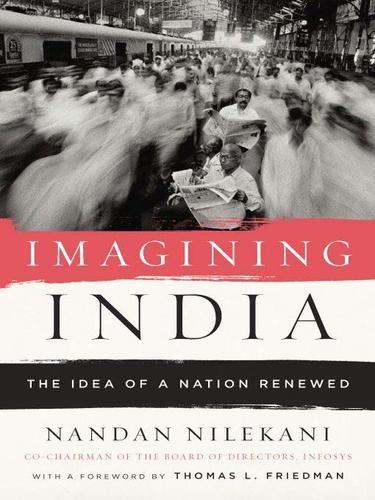
Imagining India
by
Nandan Nilekani
Published 25 Nov 2008
This market is still young and, as Anantha notes, snags on a range of issues, such as speculative trading, and has developing country green projects garnering developed markets’ carbon credits that are far more than they are actually worth. But fixing these flaws needs the active, focused participation of powerful developing countries like India. “Not having a clear carbon-pricing policy is hurting us in all kinds of ways,” Sharad says. For example, he tells me the Indian government has already sanctioned close to six hundred Clean Development Mechanism (CDM) projects, the large majority of which do not carry the expected “green” benefits. “We are rapidly selling off our carbon credits rather than holding onto them to negotiate for more effective green projects,” Sharad adds.
…
Once resource rights are established, rural and tribal communities can earn incomes by participating in carbon cap and trading schemes with businesses and industries. For example, a coal refinery that is releasing smokestack emissions might require a few years to phase out polluting infrastructure and can in the meantime purchase carbon credits through investing in a forest renewal project with a tribal group. Connecting these tribal groups to carbon markets through IT and carbon exchanges (in the same way the NCDEX has connected India’s farmers to commodity markets) would bring these communities into our markets in a big way. It is in these areas that environmental policy can gain a potentially powerful political flavor.
…
Stern points out, “Carbon taxes are pretty impractical for businesses whose infrastructure is both locked-in and capital-intensive.” For instance, 80 percent of carbon emissions come from sectors in energy and heavy industry whose investments cannot be easily replaced, and flat taxes would amount to a padlock on the door. Cap and trade policies would give these sectors the ability to purchase carbon credits, and thus give them flexibility in “what, where and when” to adopt energy-efficient processes and low-carbon infrastructure. International markets for cap and trade systems are already in place, and these would allow India some level of plug-and-play, by allowing the country to link its internal carbon market to international ones.
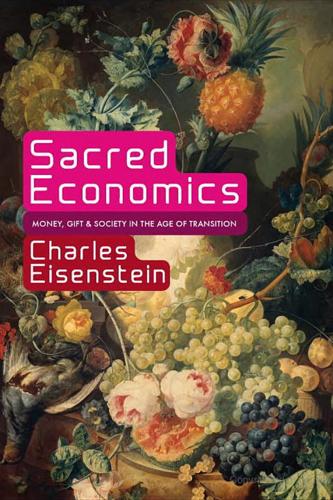
Sacred Economics: Money, Gift, and Society in the Age of Transition
by
Charles Eisenstein
Published 11 Jul 2011
However true this was of gold, it is truer still of more recent, more sophisticated backed-currency proposals, such as Bernard Lietaer’s terra currency, and recent proposals for revised IMF Special Drawing Rights, to be backed by a commodity basket reflecting overall economic activity. There is merit in this approach; indeed it is a step in the direction I envision in this book. But this backing is obviously a fiction: no one is ever going to exchange their terras for actual, physical delivery—on their doorstep—of the prescribed combination of oil, grain, carbon credits, pork bellies, iron ingots, and whatever else is on the list. No single person ever needs any of these things in his personal possession. Their value is collective, existing only within a vast web of economic relationships. But this is OK! Actual, practical redeemability is not necessary to qualify something as a backed currency.
…
We can see what they are through people’s altruistic efforts to create and preserve them. The money of the future will be backed by the things we want to nurture, create, and preserve: by undeveloped land, clean water and air, great works of art and architecture, biodiversity and the genetic commons, unused development rights, unused carbon credits, uncollected patent royalties, relationships not converted into services, and natural resources not converted into goods. Even, indeed, by gold still in the ground. Not only does association with money (and therefore with abstract “value”) elevate a thing to a sacred status, it also impels us to create more and more of it.
…
One way to bring externalized costs (and externalized benefits) onto the balance sheet is through cap-and-trade systems and other tradable emissions allowances.3 Although such systems have borne mixed results in practice (sulfur dioxide ceilings have been relatively successful, while the EU’s carbon credits have been a disaster), in principle they allow us to implement a collective agreement on how much is enough. “Enough” depends on the capacity of the planet or the bioregion to assimilate the substance in question. For sulfur dioxide, Europe and America might have separate ceilings to control acid rain; Los Angeles might have its own ozone or nitrous oxide ceiling; the planet might have a single CO2 and CFC ceiling.
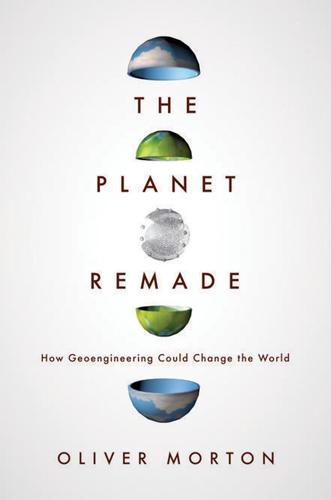
The Planet Remade: How Geoengineering Could Change the World
by
Oliver Morton
Published 26 Sep 2015
A number of groups arranged for seagoing experimental voyages to release iron in the ocean’s deserts and see what happened. Various entrepreneurs took note, too. The idea came to prominence in the period leading up to and immediately following the Kyoto protocol, when carbon markets were all the rage. If ocean fertilization could cheaply dispose of carbon from the atmosphere, it could be used to generate carbon credits which could be sold to people putting carbon dioxide into the atmosphere; one could, as one of the proponents put it, ‘save the world and get rich on the side’ – all while messing around in boats. The oceanographers did pretty well out of this enthusiasm. The possibility that iron fertilization might have an application in fighting climate change helped to get expensive research cruises funded.
…
Given the high global-warming potential of nitrous oxide, the most moderate emission of it could be enough to scupper the whole idea. The complexity uncovered by the experiments also demonstrated things that should have been obvious from the start: tracking the fate of the bloom’s carbon reliably enough to certify the process as a way of producing carbon credits that could be traded on exchanges would be immensely difficult. If the experiments did little to make geoengineering more plausible, though, they certainly raised its profile. The grandiose claims of one of the ocean-iron proponents, Russ George, an American entrepreneur also involved in trying to sell ‘cold fusion’ systems, caught the attention of the ETC group, a Canadian environmental organization which had previously been concerned mostly with agricultural issues.
…
The parties concluded that, for the time being, fertilization in the pursuit of scientific knowledge could be allowed, even in the Southern Ocean, much of which enjoys special protection under the Madrid protocol of the Antarctic Treaty. Iron fertilization as a means to non-research ends, such as selling carbon credits, is not allowed at the moment, though the convention has not been amended in such a way as to rule it out for good, and it does not apply to coastal waters. So the prospects of practical geoengineering using iron fertilization are currently slim. That seems to suit most oceanographers – many who were interested in the original research want no part in any application that it might have, and some have been active in opposing it.
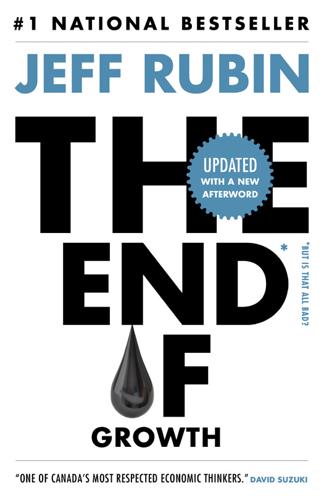
The End of Growth
by
Jeff Rubin
Published 2 Sep 2013
WHY EMISSIONS CONTROLS DON’T WORK To date, attempts to regulate emissions have been driven by a belief that we need to decarbonize our economies. Therefore, governments try to reduce fossil fuel consumption by putting a price on carbon emissions. Some countries do this through carbon taxes, while others try to control pollution using elaborate cap-and-trade systems, which involve shuffling around carbon credits. The rationale behind these policies is straightforward: make emitters pay for emissions and they’ll emit less. The reasoning is sensible enough, but it hasn’t worked in practice. So far, international climate change treaties have failed to gain universal acceptance or institute significant penalties around noncompliance.
…
As long as the world’s two largest emitters won’t pay for carbon, it’s tough to persuade Canada, or any other country, to charge domestic industries and consumers for emissions. One notable exception is the European Union. At least for the moment, the EU is taking the environmental high road and charging for emissions. But the system is far from perfect. It’s put a low cost on emissions and offers a plethora of carbon credits, which gives the agreement little financial bite. And even the environmentally conscious EU is beginning to doubt whether its efforts are worthwhile if the rest of the world doesn’t follow suit. In the absence of a global deal on carbon emissions, the EU’s Energy Department is debating whether to continue with its transition to non-carbon energy sources.
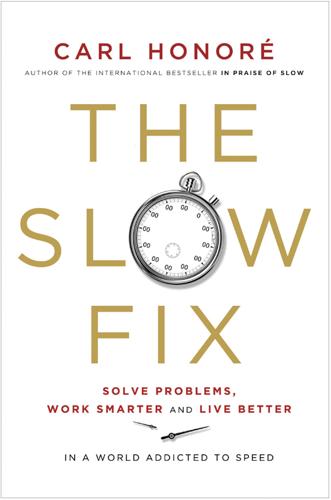
The Slow Fix: Solve Problems, Work Smarter, and Live Better in a World Addicted to Speed
by
Carl Honore
Published 29 Jan 2013
Last year, Ortega sold his Audi sedan and now travels round Bogotá either by TransMilenio or taxi – a big step in a society where having your own wheels is the ultimate status symbol. “I just don’t feel like I need a car any more,” he says. “You can live differently in this city now.” In 2009 the TransMilenio became the first large transportation project in the world to win the right to generate and sell carbon credits under the Kyoto Protocol. That means nations and companies that exceed their emissions limits, or simply wish to polish their green credentials, can buy credits from TransMilenio, thus pumping an extra million dollars a year into Bogotá’s coffers. BRT stacks up well against rival forms of transport.
…
It is much cheaper to build and maintain than a subway, yet can carry just as many passengers. Not surprisingly, cities across the world, from Cape Town to Jakarta to Los Angeles, have built or are planning their own versions. More than a dozen municipal governments, from Mexico to China, are already, or will soon be, selling carbon credits for their BRT lines. International delegations flock to Bogotá to study the TransMilenio, and urban development is now a trendy university degree for young Colombians. Of course, the TransMilenio did not spring up in isolation. In the early 1990s Bogotá was a basket case, blighted by kidnappings, terrorist attacks and one of the highest murder rates in the world.
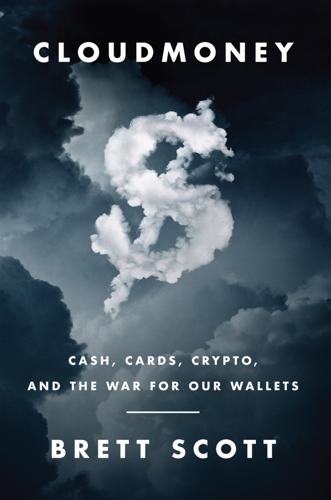
Cloudmoney: Cash, Cards, Crypto, and the War for Our Wallets
by
Brett Scott
Published 4 Jul 2022
Soon almost every major NGO was taking an interest, with climate change groups running blockchain hackathons while aid groups wondered whether the technology could be used for the distribution of food vouchers. The proposed uses ranged from tracking the movements of goods through supply chains to combatting blood diamonds and recording carbon credits. These types of groups were not interested in the fringe political philosophies that circulated in the core crypto circles. They were practical political centrists looking for new ways to do their jobs. The horseshoe was going full circle. The finance vending machine By 2016 the Ethereum community was split between those who held and speculated in its idle tokens, and those entrepreneurial techies or researchers who tinkered with hypothetical projects that those tokens might be used for.
…
Aadhar system, 44, 97, 169 abacuses, 159 ‘Abracadabra’, 50 accelerators, 17 active choice, 125 Acxiom, 109 Adventures of a Banknote, The (Bridges), 65 Aesop, 45–6 AirBnB, 150 Alameda, California, 102 alcohol, 102, 118, 170 Alexa, 147, 150 Alibaba, 2, 7, 114, 150, 178 Alipay, 114 Alphabet, see Google alt-coins, 13, 217–18 Althusser, Louis, 86 Amazon, 1, 2, 7, 133, 147, 149, 150, 174, 177, 249–50 Alexa, 147, 150 anti-cash lobbying, 41–2, 254 CBDCs and, 243, 244 Coin, 236 Pay, 150 Amazon region, 130, 176, 247, 249 American Revolutionary War (1775–83), 60 Ames Research Center, 153 Amnesty International, 222 Amsterdam, Netherlands, 128–9 Amy, 147 anarchism, 7, 14, 106, 183, 191, 193, 215 anarcho-capitalism, 14, 184 Andes, 96, 129 anthropology, 124 anti-feminism, 226 anti-Semitism, 225, 262 anti-statism, 42, 184, 215–16 antidotes, 52–4 Apollo 11 mission (1969), 153 Apple, 7, 125 apps and, 141 Card, 150 data, 108 Pay, 78, 125, 130 Super Bowl advert (1984), 8 apps, 1, 2, 7, 17, 27, 40, 125, 139–51, 232 data collection, 165–6 interfaces, 139–51 ArcelorMittal, 24 Aria, 169 Armer, Paul, 105–6 Art of Not Being Governed, The (Scott), 228 artificial intelligence (AI), 8, 11, 17, 108, 114, 147, 153–72, 175, 252 biases, 167 credit-scoring, 17, 160, 162–3, 167, 168, 170 data analysis, 108, 153–72 interfaces, 146–8 Asimov, Isaac, 161, 170 Assange, Julian, 183 Assemblage, New York City, 226 Astana, Kazakhstan, 227–9 Athens, Greece, 131 ATMs (automatic teller machines), 32, 34, 35, 36, 39, 48, 61, 62, 248 CIT industry, 62 closure of, 32, 39, 48, 83, 84, 85, 132 crises and, 36, 244 note denominations, 62 profitability, 39 Atwood, Margaret, 117 austerity, 193 Australia, 118 Austria, 7, 109 authoritarianism, 111, 118, 168 automatic payments, 149 automation, 9, 10, 33, 41–2, 99, 123, 126, 133, 137, 142–3, 232 apps, 139–51, 232 artificial intelligence, 153–72 automation of, 153–4 surveillance, 112, 114, 153–72 aviaries, 171 Azure cloud, 233 Back to the Future (1985 film), 198 Baidu, 7, 178 Bangladesh, 32 Bank for International Settlements, 79 Bank Identification Codes (BIC), 76 Bank of America, 38, 75, 147 Bank of England, 40, 242, 243 banking sector, 38–9, 65–82 accounts, 31, 35, 46, 66, 132, 205–6 artificial intelligence, 153–72 ATMs, see ATMs bailouts, 113 centralisation of power, 15, 180–83 closures of ATMs/branches, 32, 39, 48, 83, 84, 85, 132 cloudmoney, 64, 66–82 data, 108–9, 156–7 deposits, 66–7, 69 electronic trading platforms, 158 exiting, 39, 48, 61, 63, 68, 83 federated frontline, 136–8, 147 high-street banks, 39–40, 158 interbank markets, 138, 231 interfaces, 138–51 international transfers, 74–6, 108, 179 Internet banking, 76–7, 139 investment banks, 6, 17, 22–3, 26, 113, 157–8 loans, 70–71, 107, 159 money creation, 59–63, 67–72, 202 operating system, 141–2 secondary system, 50, 63–4 sub-currencies, 72–3 transfers, 72–8 banknotes, 59–63 cash-in-transit companies, 62 counterfeiting of, 60–61 denominations, 62 polymer, 65 Bannon, Steve, 225, 234 Barclays, 38, 72–3, 116 base money, 69 beggars, 115 Better Than Cash Alliance, 34–5, 37, 45, 93, 96, 131 biases, 167 bicycles, 89, 90 Big Bouncers, 114, 170 Big Brother, 113–15 Big Butlers, 114, 170–71 Bill & Melinda Gates Foundation, 44–5 biometrics, 44, 150, 169 biotechnology, 10, 11 Bitcoin, 13–15, 16, 184–5, 187–210, 211–18 blockchain technology, 13–15, 185, 189–90, 195, 197–202 Cash fork (2017), 214, 217 climate change and, 226 as commodity, 206–10, 213–14, 217, 246, 256 countertradability, 209–10, 213, 256–7 decentralisation, 14, 15, 189–94, 196, 258 fixed supply, 191–3, 206 gold comparison, 192–3, 207, 214 millenarianism and, 212, 213 mining, 203–4, 212–13 politics and, 191–3, 211–12, 215–17 proof-of-work, 203–4 public addresses, 194–5 speculation on, 213 syncing, 195–7, 200–202, 231 techno-clerks, 194–5, 196–7, 202–4, 212–13 wallets, 194–5 White Paper (2008), 13, 184–5, 187, 191 Bitcoin Cash, 214–15, 217, 226 Bitcoin Gospel, The (2015 film), 211 Blade Runner 2049 (2017 film), 10 blockchain, 13–15, 185, 189–90, 195, 197–202, 219–26, 258–60 decentralisation, 14, 15, 189–94, 196, 230, 234, 255, 258–60 distributed ledger technology (DLT), 229–46, 258 mutual credit systems and, 260 blood diamonds, 222 Bloomberg, 109 Body of Glass (Piercy), 150 BP, 24, 26, 28 bread-making machine, 164 Bridges, Thomas, 65 British Airways, 29–30 British Bankers Association, 83 Brixton Market, London, 177 Bulgaria, 13 Bundesbank, 35, 47 bureaucracy, 179 Burning Man, 101 busking, 90–91 Buterin, Vitalik, 221, 223 California Ideology, 180 Camberwell, London, 128 Cambridge Symposium on Economic Crime, 111 Cambridge University, 97 Canada, 35 Canary Wharf, London, 17–18, 20, 41, 62, 211 cannabis, 101–3 capitalism, 2, 10, 47, 65, 98–9, 173–4 blockchain and, 15–16, 231–46, 256, 258 charging up, 22–5 core vs. periphery, 28, 248 giant parable, 54–5, 63–4, 188 growth, 123, 126–7, 249 surveillance, 33, 114, 180, 250 carbon credits, 222 CARE, 131 cargo cults, 255–6 Caritas, 131 carnivals, 257 cars, 87–90 cash, 22, 29–48 banking sector and, see banking sector banknotes, 59–63 central banks and, 42–5, 254 crime and, 36, 42–3, 45, 81, 112 crises and, 36, 61 cycle, 63, 68 demonetisations, 43 fintech industry and, 41–2 hoarding, 36 issuance of, 59–63 libertarians and, 215 payments companies and, 39–41 refusal of, 29–30, 40, 41, 43, 84, 128, 133 social class and, 91–9 tax evasion and, 42, 43, 45, 46 thresholds, 42 transactional usage, 36 cash-in-transit companies, 62 ‘cash or card?’
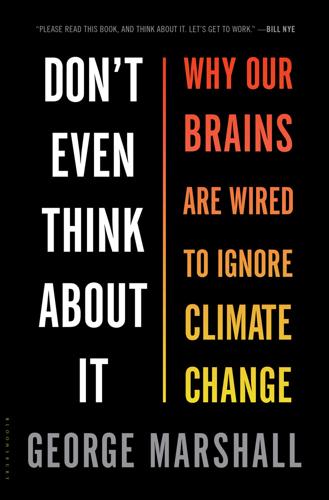
Don't Even Think About It: Why Our Brains Are Wired to Ignore Climate Change
by
George Marshall
Published 18 Aug 2014
More than half of its alleged savings came from a handful of Asian companies that were producing an obscure and very powerful greenhouse gas called HFC-23 largely so that they could claim credits for destroying it. In 2012 the CDM executive board announced that credits could be awarded to coal-fired power plants in the developing world if they improved their efficiency. Now a new coal-fired power plant in Europe can “offset” its emissions by buying carbon credits from another new coal-fired power plant in India. This seems to be not so much robbing Peter to pay Paul as robbing everyone to pay them both off. Reviewing this sorry history, academics Steve Rayner at Oxford University and Gwyn Prins at the London School of Economics concluded that arms reduction, ozone depletion, and sulfur emissions should never have been chosen as models for action on climate change in the first place.
…
Ian Plimer, a retired petroleum geologist who has built a lucrative new career as a leading Australian denier, based an entire book, Heaven and Earth, around this theme, arguing that climate change “creates a fear of damnation, demands appeasement by selling indulgences to the faithful and demonizes dissenters.” Even Cardinal Pell, Australia’s most senior Catholic, describes emissions reductions as “religious sacrifices” and compares the sale of carbon credits with “the pre-Reformation practice of selling indulgences.” However, climate skepticism is, in a manner of speaking, a broad church, and it also includes those, especially among the American Christian right, who see climate change as a heresy that “speaks to the inherent spiritual yearnings of human souls and seduces children in our classrooms through spiritual deception.”
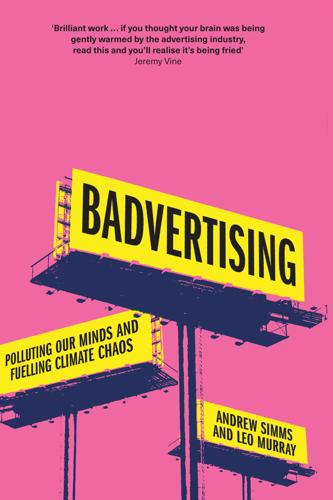
Badvertising
by
Andrew Simms
In 2019, Paris mayor Anne Hidalgo set a precedent in the field by denying the fossil fuel giant Total access to sponsor the 2024 Olympics, stating that ‘it would be very difficult for our fellow citizens to identify with companies whose activity would have a big impact on the environment, based in particular on the massive use of carbon-based energies’.80 WHY OFFSETTING IS NOT A POLLUTER’S ‘GET OUT OF JAIL FREE’ CARD So while we are on the subject, let’s just think about carbon offsetting for a moment. This is now widely used by companies who sign up to greenhouse gas emission reduction programmes. The practice allows companies to keep on emitting a certain amount of carbon emissions and be given ‘carbon credits’ in exchange for investing in carbon reduction projects, such as reforestation schemes, in other countries – often in the Global South. Among global sports institutions, FIFA is a high-profile organisation relying on carbon offsetting to live up to its climate promises. By pledging to become carbon neutral by 2050, the international football federation sets a precedent for others in football to use offsetting to attempt to achieve environmental objectives.
…
None of this has prevented ICAO, the UN body responsible for tackling global aviation emissions that we met at the start of this chapter, from making offsetting effectively its only substantive approach to the climate challenge to date. The Carbon Offsetting and Reduction Scheme for International Aviation (CORSIA) is the central plank of ICAO’s net zero efforts.33 It is a ‘global market-based measure’ creating a mechanism whereby other sectors can offer to sell carbon credits to airlines to help them achieve ‘carbon neutrality’. We shall return to the proliferation of ‘carbon neutral’ claims from airlines at the end of this chapter. But first, let us admire the views from the cabin window of a flight through the last hundred years of the aviation industry’s advertising journey
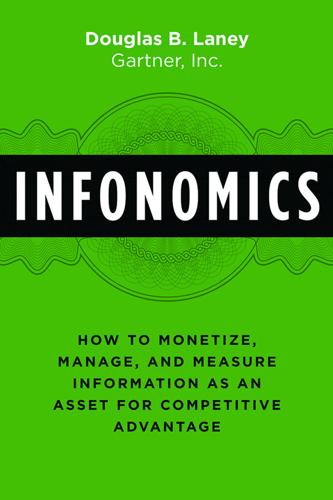
Infonomics: How to Monetize, Manage, and Measure Information as an Asset for Competitive Advantage
by
Douglas B. Laney
Published 4 Sep 2017
Notes 1 “Our Business,” Westpac.com, accessed 12 August 2016, www.westpac.com.au/about-westpac/westpac-group/company-overview/our-businesses/. 2 “Our Strategy and Vision,” Westpac.com, accessed 12 August 2016, www.westpac.com.au/about-westpac/westpac-group/company-overview/our-strategy-vision/. 3 Stuart Corner, “Westpac Using Big Data to Woo Customers with Offers Made to Measure,” The Sydney Morning Herald, 04 March 2014, www.smh.com.au/it-pro/business-it/westpac-using-big-data-to-woo-customers-with-offers-made-to-measure-20140303-hvfx5.html. 4 Corner, “Westpac.” 5 Lynda Partner, “4 Factors for Digital Transformation Success,” Pythian.com, 12 July 2016, www.pythian.com/blog/4-factors-digital-transformation-success/. 6 Partner, “4 Factors.” 7 Data Republic is an online data marketplace in which Qantas recently invested. 8 Ry Crozier, “Qantas to Extract All It Can from Data Exchange Investment,” iTnews.com.au, 13 January 2017, www.itnews.com.au/news/qantas-to-extract-all-it-can-from-data-exchange-investment-447220. 9 David Carr, “Giving Viewers What They Want,” The New York Times, 24 February 2013, www.nytimes.com/2013/02/25/business/media/for-house-of-cards-using-big-data-to-guarantee-its-popularity.html. 10 “XO Communications,” ibm.com, accessed 05 June 2016, www.ibm.com/smarterplanet/global/files/us__en_us__leadership__xo_communications.pdf. 11 “Florida Hospital Network Deploys IBM’s ECM Solution to Prevent Vendor Fraud, Reduce Operating Costs,” hospitalmanagement.net, 06 November 2013, www.hospitalmanagement.net/news/newsflorida-hospital-network-deploys-ibms-ecm-solution. 12 “Steadyserv iKeg Beer Analytics for Bars,” Inc.com, accessed 05 June 2016, www.inc.com/doug-cantor/steadyserv-ikeg-beer-analytics-for-bars.html. 13 accessed 05 June 2016, www.steadyserv.com. 14 “First Indigenous Carbon Credits Sold,” Australian Government Indigenous Land Corporate Press Release, accessed 15 January 2016, www.ilc.gov.au/IndigenousLandCorporation/media/Items/Content/Media/Media%20Releases/First_Indigenous_Carbon_Credits_Sold.pdf. 15 “DSCI Improves Targeting & Segmentation Driving 2X Increase in Online Conversion,” Dun & Bradstreet, 22 July 2016, www.dnb.com/perspectives/marketing-sales/dsci.html. 16 Chris Weller, “Tech Startups Bring Science to Marijuana Dispensaries,” Newsweek, 30 July 2014, www.newsweek.com/2014/08/15/tech-startups-bring-science-marijuana-dispensaries-262096.html. 17 accessed 09 February 2017, www.potbot.com. 18 Adam Sadilek, Sean Brennan, Hery Kautz, and Vincent Silenzio “nEmesis: Which Restaurants Should You Avoid Today?
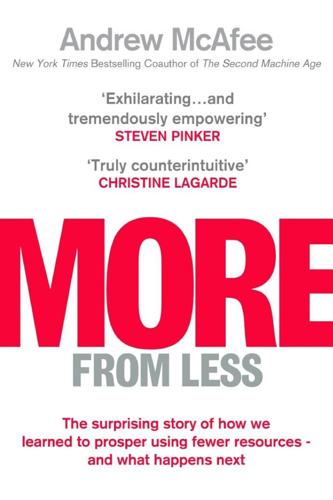
More From Less: The Surprising Story of How We Learned to Prosper Using Fewer Resources – and What Happens Next
by
Andrew McAfee
Published 30 Sep 2019
“By investing in underserved entrepreneurs”: Jamie Dimon and Steve Case, “Talent Is Distributed Equally. Opportunity Is Not,” Axios, March 21, 2018, https://www.axios.com/talent-is-distributed-equally-opportunity-is-not-1521472713-905349d9-7383-470d-8bad-653a832b4d52.html. Salesforce is buying enough carbon credits: Akshat Rathi, “If Your Carbon Footprint Makes You Feel Guilty, There’s an Easy Way Out,” Quartz, May 3, 2017, https://qz.com/974463/buying-carbon-credits-is-the-easiest-way-to-offset-your-carbon-footprint/. Salesforce has also announced its intentions: “Salesforce Invests in Its Largest Renewable Energy Agreement to Date, the Global Climate Action Summit, and a More Sustainable Future,” Salesforce, August 30, 2018, https://www.salesforce.com/company/news-press/press-releases/2018/08/180830/.

How to Spend a Trillion Dollars
by
Rowan Hooper
Published 15 Jan 2020
The area is managed by the government’s environment ministry, with support from the Wildlife Conservation Society and other partners, who have worked to engage the communities with conservation measures designed to improve their livelihoods. For example, 20 villages in the area have signed up to a carbon credit scheme whereby they earn revenue by helping to keep the forest intact as part of the REDD+ project (Reduced emissions from avoided deforestation and forest degradation). In 2016, the villages sold their first REDD+ carbon credits to a US company, using the revenue to improve their water supply and construct a meeting space for the community. It is by no means easy to manage, however. In 2018, three rangers were murdered while investigating an illegal logging camp.29 Another example is Madidi National Park in Bolivia, a 19,000 square-kilometre area of jungle with more than 20,000 plant species and 1,100 species of bird.

The Climate Book: The Facts and the Solutions
by
Greta Thunberg
Published 14 Feb 2023
High-quality, secure jobs would emerge. Children would be safe to cycle and the air would be better for their lungs. Such widespread benefits would come with considerable costs, falling primarily on the shoulders of the select ‘we’: those of us who have thus far shaped the climate debate around speculative tech, electric SUVs, carbon credits that ‘we’ can afford, heat pumps for our holiday homes and offsets for our flying. It is ‘we’ who have failed to mitigate warming. We have been unwilling to question our profligate consumption, the allure of infinite economic growth and the hugely disproportionate allocation of society’s productive capacity to furnish the relative luxuries of us fortunate few.
…
The cost of renewable energy is still beyond the affordability of the poor in the world; those in power must not preach the need for energy transitions but instead pay for them to happen. This is where the discussions on the use of markets, through instruments like emissions trading, should be put to work. These should be used for transformational action so that projects that will bring ‘big bang’ carbon reductions can be paid for through financial transfer and carbon credits. For instance, the provision of clean energy through millions of mini-grids in the communities of the poorest. In this way, the market will be led by public policy and intent, and not left susceptible to new scams in the name of carbon offsets. Similarly, there is an opportunity to use the ecological wealth of poor communities for mitigation, as trees and natural ecosystems sequester carbon dioxide.
…
W. 240, 241 Bush, George W. 27, 217 butterflies, 108, 110–11, 113 B vitamins, 150, 151 C Caddis flies, 110 calcification, 84 calcium carbonate (common ‘limestone’) (CaCO3), 237 calories, 150, 244, 248–51, 254 Canada, 4–5, 27, 50, 64, 92, 98, 102, 103, 104–5, 121, 155, 221, 228, 258, 322–3, 325, 375–7, 399, 408–9, 414 capitalism, 13, 30–31, 162, 202, 310, 361–2, 390, 399 Capstick, Stuart, 325, 328–30 car, 58, 208, 220–21, 283, 288, 302, 329, 333–4, 335, 338, 350, 406, 407; electric, 28, 222–3, 226, 227, 268, 271–5, 324, 333, 386 carbon dioxide (CO2) emissions: accounting techniques, 92, 156, 201, 240, 256–8, 258, 269, 302, 414, 421; atmospheric concentration (1850–2020) 55, 155; atmospheric concentration (1950–2010) 34; atmospheric concentration trends (1960–2020) 28; BECCS (bioenergy with carbon capture and storage), 212, 216, 237, 238, 303; binding commitments, 27, 41, 90–91, 93, 303, 398, 430, 433; budgets, 3, 20, 121, 154–5, 202, 206, 207, 209, 210–11, 226, 241, 269, 270, 274, 281, 304, 308, 309, 405, 429, 430, 431, 433, 434, 436; carbon capture and storage, 212, 216–17, 226, 228, 236, 237, 238, 264, 303, 370; carbon-combustion complex, 29; carbon credits, 309; carbon cycle, 6–8, 85, 96, 98, 116, 117, 118, 252; carbon footprints 4, 29, 206, 240, 250, 252, 253, 257, 285, 289, 311, 311, 325, 326, 334, 373–4, 406, 406, 435; carbon neutrality, 252; carbon quotas, 408; carbon rights, individual, 407–8; carbon sequestration, 231–2, 308, 346, 418; carbon sinks, 53, 56, 79, 96, 101, 104–5, 104, 116, 172, 212, 230, 232, 252, 309, 322–3, 325, 430; carbon taxes, 27, 407–9; climate change discovery and, 23–8; climate stability safety level and, 241; cumulative emissions per capita (1850–2020) 155; deep history of, 6–8; drawdown technologies, 235–9; Earth system, significance of to every component of 6; emissions trading schemes, 30, 204–5, 227, 309; End-Permian mass extinction and, 7; historical emissions, 21, 163–4, 206, 207, 257, 304, 308–9, 358, 383, 389, 398; Intergovernmental Panel on Climate Change (IPCC) foundation, emissions since, 20; negative emissions, 204, 206, 237, 303, 383, 430; net zero emissions, 21, 54, 58, 204, 211–13, 239, 261, 263, 263, 304, 309, 400, 407; offsetting, 186, 205, 206, 209, 212, 236, 258, 269–70, 271, 283, 288, 302–3, 309, 324, 430, 436; 1 tonne per person a year target, 4–5; overshoot, 235; peak in emissions, 25–6; per capita emissions, 4–5, 155, 249, 274, 282, 315, 406, 407, 408; pricing, 227; territorial- and consumption-based accounting perspectives, emissions of G20 countries from 258; wood fuel burning and, 4, 92, 100, 102, 121, 156, 216, 224, 225, 226, 229, 233.
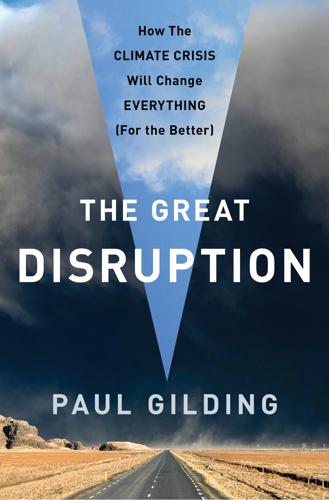
The Great Disruption: Why the Climate Crisis Will Bring on the End of Shopping and the Birth of a New World
by
Paul Gilding
Published 28 Mar 2011
The International Energy Agency modeling shows more than $100 trillion could be saved by 2050 through a focused effort on energy efficiency.3 I had my own experience of this market as CEO of a business called Easy Being Green, which was owned by my consulting business, Ecos Corporation. Easy Being Green installed energy-saving equipment like lightbulbs and water saving devices into houses. We had over two hundred mainly young people employed going into thousands of homes every week, saving energy and spreading the message of climate change. We generated and sold carbon credits, reflecting the energy saved, which meant we could provide and install the equipment to householders for free. There were many things we learned in the process. One was how incredibly motivated and passionate our people were. We had highly skilled university graduates happily employed changing lightbulbs.
…
Wildlands then buys back the small trees for credits, which the tree-preneurs take to “tree stores” and exchange for bicycles, clothing, blankets, and food. So while for them money doesn’t grow on trees, food, clothing, and bicycles do! Wildlands Trust then plants these trees in urban greening and forest restoration programs, generating further local employment and carbon credits for businesses to buy. Another great example of market principles being applied on the ground is E+Co, a nonprofit taking a business approach to bringing clean energy to villages to reduce poverty. As they say: “E+Co finds great entrepreneurs. We help them establish clean energy businesses. Then we invest.

The Coming of Neo-Feudalism: A Warning to the Global Middle Class
by
Joel Kotkin
Published 11 May 2020
In prerevolutionary times, French aristocrats and top clerics preached Christian charity while indulging in gluttony, sexual adventurism, and lavish spending. Today, many in the struggling middle and working classes see the well-to-do displaying their environmental piety by paying “green” indulgences through carbon credits and other virtue-signaling devices, while these “enlightened” policies impose extraordinarily high energy and housing costs on the less well off.34 Alienated elements of the middle and working classes are responding with what might be likened to a modern peasants’ rebellion. It can be seen in a series of angry votes and protests against the policies championed by the clerisy and oligarchy—on climate change, global trade, and migration.
…
In the Middle Ages, most parish priests and their communicants suffered great material hardship, while many bishops lived in luxury, “loaded with gold and clad in purple,” as Petrarch put it.22 Similarly, environmentalists aim to impose austerity on the masses while excusing the excesses of their ultra-rich supporters.23 Even as they urge everyone else to cut back on consumption, the “green rich” buy a modern version of indulgences through carbon credits and other virtue-signaling devices.24 This allows them to save the planet in style. Recently, an estimated 1,500 GHG-spewing private jets were flown to Davos carrying people to a conference to discuss the environmental crisis. Few of the high-profile climate activists seem willing to give up their multiple houses, yachts, or plethora of cars.25 Perhaps most disturbing, some in the green movement have become highly dogmatic in their views, often denigrating or even persecuting those who dare dissent in any way.
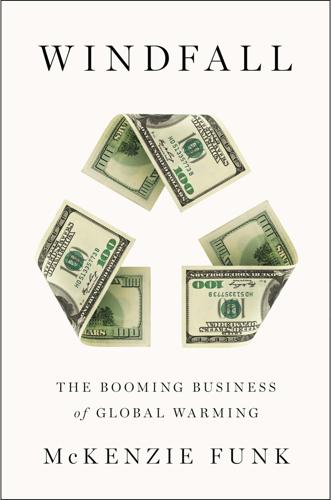
Windfall: The Booming Business of Global Warming
by
Mckenzie Funk
Published 22 Jan 2014
In scale and imagination, it was rivaled only by the ski village and ninety-foot snowboard slope the bank had constructed a few weeks earlier along Rodeo Drive in Beverly Hills: chalets decorated with deer-antler chandeliers and wooden snowshoes, Deutsche Bank–branded ice sculptures, models dressed as snow bunnies, bottled water from Iceland, faux snow blown down from the roof of the Versace store, thirty tons of more realistic snow created by a wood chipper and a freezer truck full of ice blocks, and two pro snowboarders who would later complain that nobody had built them a proper jump. Together, the Manhattan and Beverly Hills events cost $1.5 million, but they were carbon neutral, the bankers boasted, their greenhouse emissions offset by investments in a biogas project in India. At South Street Seaport, every attendee was given a certificate from the Carbon Credit Company as proof. The jungle party, which lasted three hours, produced 152 tons of greenhouse gases, which the average Indian would need three lifetimes to match. Before a DJ set by the Brazilian Girls—a group with no actual Brazilians and only one girl—the bankers held a press conference.
…
AIG had Firebreak, but where rich policyholders were clustered on risky coastlines, its Private Client Group was offering the Hurricane Protection Unit: men with GPS units and satellite phones who were on the scene after a storm blew through, boarding up broken doors and windows, patching holes in roofs, covering skylights with tarps, evacuating valuable artwork. In the corporate world, Munich Re’s Kyoto Multi Risk Policy protected investors from carbon-credit defaults, and its weather derivatives helped solar projects hedge against cloudy days, wind projects against calm days. Munich Re would host a “climate liability workshop” at Princeton a day after Little Tujunga. (It might be prudent to phrase policies so as to limit climate liability, they determined.)
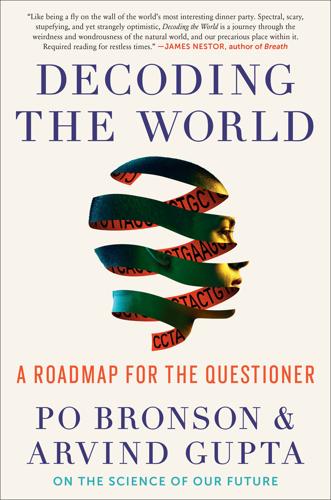
Decoding the World: A Roadmap for the Questioner
by
Po Bronson
Published 14 Jul 2020
In the United States, the number one biggest user of the tax credit is the Petra Nova facility near Houston, Texas, which sends the CO2 from the coal boiler eighty-two miles away, where it’s used to frack yet more gas from an oil field. Oil production in that field has gone up fifty times. So our carbon credit is generating more oil extraction, not less. It’s a wicked game, where wolves hide in sheep’s clothing. CRI is a company in Iceland with a better idea, and so I sit down with their CEO, Inglo, and Margaret, their head of business development. This is in Kópavogur, a suburb of Reykjavik, at CRI’s headquarters.
…
It’s the most incisive, penetrating, no-bullshit calculation of climate change I’d ever heard. And all because of the prince and his insane party. Meeting Tom gave us a real lift of spirit. Having Tom as a compatriot created a kind of second renaissance at IndieBio, where we had the courage to invest in solutions that were going to rely on carbon credits for income. Tell them about olivine cakes. Sure. Ever since I got back from Iceland, it’s haunted me that we can speed up the conversion of captured CO2 to rock with the plentiful mineral olivine. The entire west coast of North America has olivine under the crust. Gavin Newsom, our governor, had just approved new carbon sequestration credits that were the highest in the world—$150 per ton of CO2.
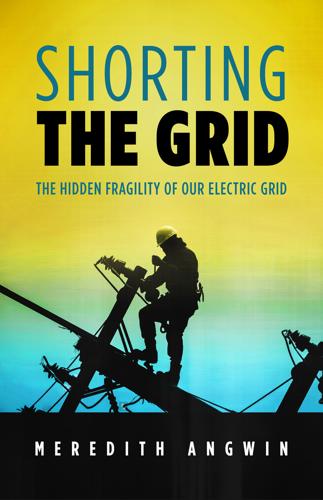
Shorting the Grid: The Hidden Fragility of Our Electric Grid
by
Meredith. Angwin
Published 18 Oct 2020
Trabish, “NextEra drops Vermont RECs, adding weight to fraud claims,” Utility Dive, May 21, 2014, https://www.utilitydive.com/news/nextera-drops-vermont-recs-adding-weight-to-fraud-claims/265767/. 179 John Herrick, “Special Report: New renewable standard would revolutionize energy use in Vermont,” VTDigger, February 17, 2015, https://vtdigger.org/2015/02/17/special-report-new-renewable-standard-revolutionize-energy-use-vermont/. 180 “GMP’s Energy Supply is 90% Carbon Free,” Green Mountain Power, December 13, 2018, https://greenmountainpower.com/2018/12/13/fuel-mix/. 181 Meredith Angwin, “What going to 90% renewable energy would do to Vermont’s landscape,” Yes Vermont Yankee, May 14, 2013, https://yesvy.blogspot.com/2013/05/the-90-solution-what-90-renewables.html#.Xc_7Q6fMxTa. 182 Meredith Angwin, “The Measured Move to Renewables in Vermont,” Yes Vermont Yankee, June 9, 2012, https://yesvy.blogspot.com/2012/06/measured-move-to-renewables-valley-news.html#.XdKdFKfMxTb. 183 “Cow Power,” Green Mountain Power (website), undated, https://greenmountainpower.com/help/billing-payments/cow-power/. 184 Kristin Kelly (private communication), Green Mountain Power, November 12, 2019. 185 “Service Area” (web page), Green Mountain Power, updated frequently, https://greenmountainpower.com/map/service-area/. 186 “Air Quality (web page),” NEI (website of Nuclear Energy Institute), undated, https://www.nei.org/advantages/air-quality. 187 Meredith Angwin, “The New York Clean Energy Standard,” Yes Vermont Yankee, August 1, 2016, https://yesvy.blogspot.com/2016/08/the-new-york-clean-energy-standard.html#.XdKh_afMxTZ. 188 Rod Adams, “Fighting climate change with best available tools,” Atomic Insights (blog), August 1, 2016, https://atomicinsights.com/fighting-climate-change-best-available-tools/. 189 Tim Knauss, “Dozens of CNY residents flood Albany meeting on nuclear subsidies,” syracuse.com, August 1, 2016, updated January 4, 2019, https://www.syracuse.com/news/2016/08/dozens_of_cny_residents_flood_albany_meeting_on_nuclear_subsidies.html. 190 Jeff St. John, “New York’s Nuclear Zero-Carbon Credits Pass Federal Court Challenge,” gtm: (website of Greentech Media), September 27, 2018, https://www.greentechmedia.com/articles/read/new-yorks-nuclear-zero-carbon-credits-pass-federal-court-challenge#gs.8zkb0k. 191 Press Release by Environmental Defense Fund, “Appeals Court Upholds New York Clean Energy Plan,” EDF: Environmental Defense Fund (website), September 27, 2018, https://www.edf.org/media/appeals-court-upholds-new-york-clean-energy-plan. 192 Robert Bryce, “Indian Point nuclear-reactor shutdown a huge blow to New York’s environment,” New York Post, April 29, 2020, https://nypost.com/2020/04/29/indian-point-nuclear-reactor-shutdown-a-huge-blow-to-nys-environment/. 193 Iulia Gheorghiu, “Connecticut moves to preserve Millstone Nuclear plant with 10-year power deal,” Utility Dive, January 3, 2019, https://www.utilitydive.com/news/connecticut-moves-to-preserve-millstone-nuclear-plant-with-10-year-power-de/545133/.
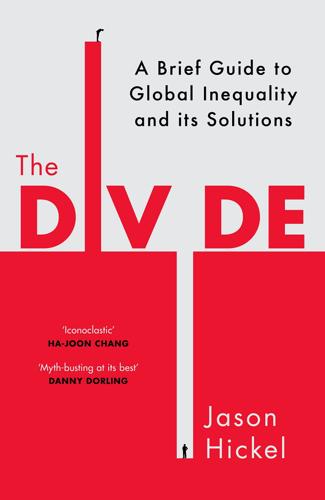
The Divide: A Brief Guide to Global Inequality and Its Solutions
by
Jason Hickel
Published 3 May 2017
But perhaps the most disturbing recent trend is that land grabbing is now also being conducted in the name of the most progressive cause of this century: climate change mitigation. In 2005, the United Nations and the World Bank began developing a new strategy for reducing greenhouse gas emissions known as REDD, or by its rather clumsy full name, Reducing Emissions from Deforestation and forest Degradation. REDD allows companies in rich countries to buy carbon credits to get around their emissions limits, and then uses that money to protect forests in developing countries from being chopped down for commercial purposes. REDD’s basic innovation is to recognise that our present economic model assigns value to forests only when the trees are chopped down and turned into commodities; it fails to account for the devastating – and incredibly expensive – costs that deforestation produces in the form of climate change.
…
In other words, some of the very companies that are driving deforestation through land grabs are now grabbing yet more land under the guise of offsetting the environmental damage they have caused. Instead of protecting forests from destructive market forces, REDD is rapidly bringing forests into the market. And in the end it will lead to zero reduction of carbon emissions at source; after all, the whole idea behind carbon credits is to allow polluters to avoid reducing their emissions by buying their way around the rules. * While local elites might make handsome profits, the environmental losses that developing countries suffer at the hands of land-grabbers are immense. But there is also a substantial financial loss at stake.

Whole Earth Discipline: An Ecopragmatist Manifesto
by
Stewart Brand
Published 15 Mar 2009
But if we encourage it in the right way, nuclear energy growing well would mean that it minimizes humanity’s carbon-loading of the atmosphere; that it collaborates well with other carbon-free or superefficient energy forms; that it helps generate other Green services such as desalination or hydrogen; that its uranium and thorium make minimum lasting mess on their way from the ground and back to it; that it helps eliminate nuclear weapons; that it securely energizes cities and thereby helps reduce world poverty; and, if something better comes along, that it gracefully gives way to its replacement. Glow-in-the-dark Greens might push especially hard for first-rate microreactors and help them to find customers. We might insist that the next version of the Kyoto Protocol does not repeat the disgrace of denying carbon credits for nuclear power. We might lobby for open-sourcing the various reactor designs, for public debugging and trust. We might encourage investigating nuclear propulsion on commercial ships, the current source of 4 percent of greenhouse gas emissions—double the amount generated by airplane traffic.
…
As with energy efficiency, close attention turns up all sorts of possible gains. You notice things like plantstones, also called phytoliths. They are microscopic silica balls that lock up plant carbon in the soil for thousands of years. All crop plants have them and could be genetically encouraged to have more, earning farmers carbon credits for sequestering carbon. Every GE-capable foundation, corporation, and government is working on drought-tolerant and salt-tolerant crops, especially for climatically fragile Africa. Such crops are so crucial for adapting to climate change that they are sure to come, and the sooner the better.

Green Tyranny: Exposing the Totalitarian Roots of the Climate Industrial Complex
by
Rupert Darwall
Published 2 Oct 2017
Despite the demanding nature of Britain’s commitment to cut greenhouse gas emissions from 1990 levels by 35 percent by 2020, the CMA found the renewables target “more constraining.”12 Using renewables inflicts additional economic pain for no societal gain, a finding with important implications for others following Germany’s lead, including several states in the U.S., notably California. The CMA was also critical of having a renewables target in parallel with cap and trade: while the ETS cap is still in place and binding, such policies will not reduce aggregate EU or global emissions, but serve to depress the EUA [carbon credit] price.13 One after another, non-EU countries fell into that elephant trap. During his September 2015 state visit to the United States, President Xi Jinping announced that in addition to promoting renewable energy, China would also adopt cap and trade. In terms of policy smarts, the mandarins of the Middle Kingdom have little on their counterparts in Berlin, Brussels, and Washington.
…
Energy-intensive firms were bought off with 90 percent exemptions from EEG levies. Even Solar-World, a leading manufacturer and marketer of solar PV, demanded an exemption or else it would leave Germany because of uncompetitive energy costs.28 Germany’s Big Four utility companies were anesthetized with bribes of grandfathered carbon credits before their business model was euthanized. RWE, the second largest, received a windfall of about $6.4 billion in the first three years of the ETS.29 From their peak in January 2008, the three quoted utilities saw their share prices capitulate before the Energiewende machine of destruction.* By August 2015, the share price of EnBW had lost 59.5 percent of its value, e.on had fallen by 70.2 percent, and RWE by 84.7 percent.
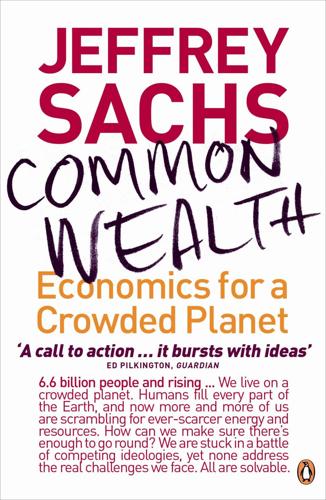
Common Wealth: Economics for a Crowded Planet
by
Jeffrey Sachs
Published 1 Jan 2008
Rather than paying these countries to cut their forests (when we buy their lumber), the world would pay them to conserve their biodiversity and sequester the carbon in the forests. The Coalition for Rainforest Nations has proposed that countries be given carbon credits for avoiding deforestation. Under the Kyoto Protocol, rain forest countries can get carbon credits for reforestation and for afforestation (creating forests where they did not previously exist) but not for avoiding deforestation! The proposed change would pay countries if they agree to stop the current trend of deforestation and commit the country to a given assured level of forest cover.
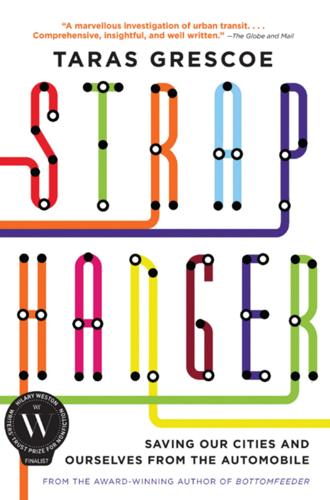
Straphanger
by
Taras Grescoe
Published 8 Sep 2011
Glancing at the pavement, I noticed someone had scrawled an English-language graffito into wet cement, now hardened into a permanent homage: “I love Bogotá.” I’d expected to find a Third World city putting on a brave face, but on this Sunday, Bogotá felt more like an equatorial Amsterdam. Dotted with appealing squares and well-groomed parks, and green enough that it has United Nations approval to sell carbon credits to more polluted cities, the city has become a model of advanced urbanism in the tropics. How, in little more than a decade, did Bogotá go from being one of the most chaotic, crime-ridden, and congested cities on the planet to one of the best managed—a place people now say they are proud to be from?
…
Diesel in Colombia still has five hundred parts per million of sulfur. There are plans to reduce it to fifty, which is the standard in North America, but that won’t happen for at least five years. There are all kinds of issues with particulate matter and respiratory disease.” (The United Nations allows TransMilenio to sell carbon credits to other cities not because it uses clean fuel, but because the system has removed so many busetas, which are even more polluting, from the streets.) Diesel-electric buses, acknowledged Hidalgo, would be the best alternative; they pollute less and consume 90 percent less gas than regular buses, but cost three times as much to buy.

The War Below: Lithium, Copper, and the Global Battle to Power Our Lives
by
Ernest Scheyder
Published 30 Jan 2024
“We don’t need to destroy the United States to address climate change,” Warren told me. “This mine would create an environmental issue in an attempt to address an environmental issue.” The couple were at pains to share their green credentials. Through the Natural Capital Exchange, for instance, the Snowdons sold carbon credits to Microsoft; the family would plant trees to soak up carbon and the software giant would buy the carbon credits. They were planning to install solar panels and wind turbines on their acreage. They owned a hybrid. “We’re so much greener than most other people,” Warren told me, almost as if to strain a point. “And we’re not opposed to lithium, we just want it someplace else.”

Lifestyle Entrepreneur: Live Your Dreams, Ignite Your Passions and Run Your Business From Anywhere in the World
by
Jesse Krieger
Published 2 Jun 2014
Customers could choose from a selection of solar power, wind turbines and biogas generators to power their home or business. This connected concerned citizens with a customizable way to live a green, sustainable lifestyle. Vision-MAP for Village Green Energy After working on clean energy projects as an investment banker, I co-founded a company called Village Green Energy (VGE) to work directly in the carbon credit and compliance market. VGE purchases clean energy credits from solar, wind and biogas energy generators and sells them retail to businesses and households who want to reduce their carbon footprint. We also built a Facebook application which addressed sustainability in the wine industry. The company was sold in 2010.
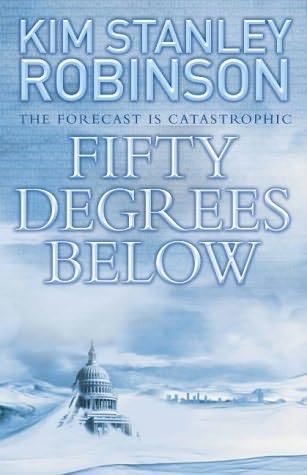
Fifty Degrees Below
by
Kim Stanley Robinson
Published 25 Oct 2005
Given this situation, I think we have to identify the two or three most promising options in each big carbon area, energy and transport, and then immediately support these options in a major way. Pilot projects, maybe competitions with prizes, certainly suggested tax structures and incentives to get private enterprise investing in it.” “Make carbon credits really expensive,” Frank said. “Make gas really expensive,” Edgardo said. “Yes. These are more purely economic or political fixes. We will run into political resistance on those.” “You’ll run into political resistance on all these fronts.” “Yes. But we have to work for everything that looks like it will help, political resistance or not.
…
She pushed relentlessly all day, discussing plan after plan, typing memos into her laptop and then without further ado moving on to the next matter, sometimes with a changed cast facing her, other times abruptly with the same people, with nothing more than an: “Okay, what about this?” Late in the day they met with representatives of the European carbon emissions trading group and futures market; there was a futures market in carbon credits, as there was for everything else, and Diane felt its calculations could be tweaked to make it more accurate and useful. The carbon treaty talks scheduled for the following year were almost certain to make emissions much more expensive, and this was the kind of prospect that often gave a huge push to a futures market, as people tried to buy while the commodity was still cheap.
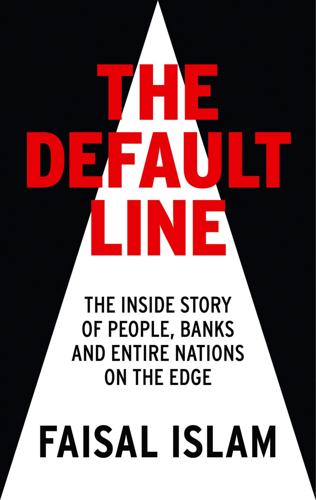
The Default Line: The Inside Story of People, Banks and Entire Nations on the Edge
by
Faisal Islam
Published 28 Aug 2013
Emit less than your allocated permit allows and you can sell the surplus credits on the market – so polluters are paid to emit less carbon. Emit more than your allocation and you need to buy new credits, a financial punishment for over-polluters. The price is then set by the interaction of supply and demand for the credits. If all traders are emitting too much carbon, the price of permits will skyrocket. The higher the price of carbon credits, the greater the incentive for polluting industries to rein in their emissions. That is the theory that drives the carbon traders of Kingston upon Thames. Gazprom’s vision is to marry its unrivalled supply of hydrocarbon gas from Siberia to Russia’s highly inefficient industrial base, ripe for carbon-saving technology.
…
It is no surprise, then, that major US polluters and power companies are lobbying hard for the same helping hand, the same multibillion-dollar windfalls, from embryonic US emissions-trading schemes. The surest sign of disaster was that the oil supermajors began to feel a little left out of this bonanza. The largest oil firms in the world lobbied for a system of ‘upstream cap-and-trade’ in the USA, in which carbon credits are earned and traded by the companies actually physically removing hydrocarbons from the ground, rather than those who actually burn the oil, gas and coal. For economists such as Paul Klemperer, this jackpot for the supermajors was utterly predictable. ‘An emissions-permits system that’s implemented this way makes even the most polluting firms better off,’ he says.

Good Economics for Hard Times: Better Answers to Our Biggest Problems
by
Abhijit V. Banerjee
and
Esther Duflo
Published 12 Nov 2019
Having to pay an explicit price for polluting is certainly something firms take seriously. Allowing firms to buy the right to pollute from other firms that are actually actively reducing pollution, the idea of tradable carbon credits, may also be a good idea because it creates incentives for nonpolluting firms to find ways to actively “unpollute,” say, by planting trees. And the revenues from taxes on polluters is useful because we need to pay for new environment-friendly technologies. But there is a strong case for going beyond carbon credits. Take someone who thinks of themselves as having a strong commitment to fighting climate change but ends up never buying energy-efficient LED lightbulbs.
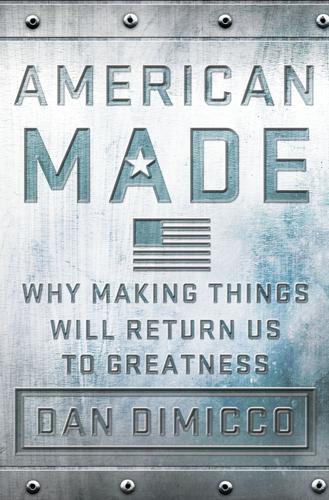
American Made: Why Making Things Will Return Us to Greatness
by
Dan Dimicco
Published 3 Mar 2015
You’re just letting them produce the same stuff over in China and Russia—where the environmental impact is potentially twice as bad. Cap-and-trade is a good case in point. The idea behind cap-and-trade is that government sets a limit on how much carbon “pollution” your business can emit, and you buy permits to “pollute.” If your business emits less carbon than you’re permitted, you can sell or trade your extra carbon credits to other businesses. I say cap-and-trade is really a tax on doing business. It makes us less competitive and raises our costs. Now, it would be one thing if everyone around the world were subjected to cap-and-trade, if we could make sure that all the other folks aren’t going to send their products to the United States to displace us because our cost structure is too high thanks to this carbon tax.

The Coffee Book: Anatomy of an Industry From Crop to the Last Drop
by
Gregory Dicum
and
Nina Luttinger
Published 1 Jan 1999
Now, with more than 6 billion people on the planet, there are few rugs left under which to sweep externalities. One of the long-term goals of many environmental economists is thus to internalize these costs by creating mechanisms whereby consumers pay to prevent these impacts from happening. The developing international system of carbon credit trading is one example of the fruits of this kind of thinking. Regardless of its long-term ecological and social impacts, and despite mounting evidence against its economic advantage, the short-sighted trend toward technification continues. Aid organizations, including the United States Agency for International Development (USAID) and the International Monetary Fund (IMF), the original purveyors of the Green Revolution, have subsidized technification in Latin America with at least $80 million in “aid” since 1978.

Survival of the Richest: Escape Fantasies of the Tech Billionaires
by
Douglas Rushkoff
Published 7 Sep 2022
The market’s requirement for growth is not an impediment to social, economic, and environmental justice, but the way to fund and reward those who bring it all about. Energy and money for everyone. Just ask Elon Musk. His fully electric, zero emissions vehicles (along with government subsidies and carbon credits) have made him the (sometimes) richest man in the world, created jobs for over 70,000 employees, and made electric cars cool. But are Teslas really making the world a better place? They’re fun to drive and a great advertisement for a post-carbon future where you can go zero to sixty in less than three seconds, but as far as environmental impact goes, they’re a bit like solar panels.
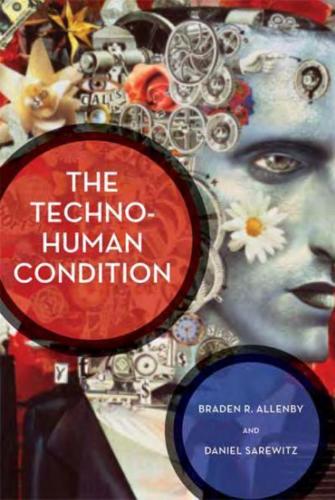
The Techno-Human Condition
by
Braden R. Allenby
and
Daniel R. Sarewitz
Published 15 Feb 2011
The intellectual confusion that occurs when one applies Level I and Level II coherent worldviews to a Level III condition is quite evident today in the climate-change arena and in the infatuation with "carbon footprints."lo For example, a professor writing in the Medical Journal of Australia recently called on the Australian government to impose a carbon charge of $5,000 on every birth, to charge annual carbon fees of $800 per child, and to provide a carbon credit for sterilization. 11 Articles in New Scientist have suggested that obesity is mostly a problem because of the additional carbon load it imposes on the environment,12 that a major social cost of divorce is the additional carbon burden resulting from splitting up families, and that pets should be should be eliminated because of their carbon footprints ("Man's best friend, it turns out, is the planet's enemy").13 A recent study from the Swedish Ministry of Sustainable Development argues that males have a disproportionately larger impact on global warming. 14 ("Women cause considerably fewer carbon dioxide emissions than men, and thus considerably less climate change.")
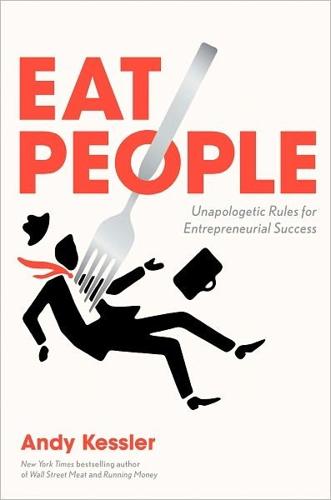
Eat People: And Other Unapologetic Rules for Game-Changing Entrepreneurs
by
Andy Kessler
Published 1 Feb 2011
With cap and trade, someone sets the amount of emissions each firm is allowed and then trading begins between those that need more emission permits and those that have extras because they reduced emissions. But this is flawed in that people, not the market, set the actual cap or maximum amount of emissions, creating an almost artificial market for extra carbon credits to trade until the right price is set. The more human intervention overriding the market, the tougher true price discovery becomes. Lots of companies are playing around with prediction markets, using the Intelligence at the Edge and running surveys and varying pricing to figure out what people will pay for new products.

How Much Is Enough?: Money and the Good Life
by
Robert Skidelsky
and
Edward Skidelsky
Published 18 Jun 2012
In his Agathotopia (1989), Nobel Laureate James Meade reckoned that a subsistence income, equal to unemployment benefit, for all citizens could be financed through a combination of capital taxes and profits from state-owned but privately managed investment trusts. It would be set to grow in line with national income.19 Others suggest that the sale of pollution permits, like carbon credits, based on environmental impact, would be enough to finance a basic income of €1,500 in the EU.20 Taxes on capital transactions—known as Tobin taxes—are another potential source of income. In 2001, two American professors, Bruce Ackerman and Anne Alstott, put forward a costed plan for capital endowment based on a tax on private wealth.21 A small step towards a capital endowment for all was Gordon Brown’s “baby bond” scheme, the Child Trust Fund, which he set up as Chancellor of the Exchequer in 2001.

Road to Nowhere: What Silicon Valley Gets Wrong About the Future of Transportation
by
Paris Marx
Published 4 Jul 2022
As a result, Tesla’s factory workers suffer higher rates of injury than the industry standard, and Musk has been vocally anti-union to the extent that the US National Labor Relations Board found he violated labor law for threatening workers with the loss of stock benefits if they unionized. A combination of these issues meant that Tesla failed to meet both its initial production targets and its revenue targets, and the profits it reported were the result of selling carbon credits, not electric vehicles. But that has not stopped Tesla’s share price from soaring far beyond its value on paper, or the value of any other automaker, because of how the stock prices of highly hyped tech companies have become divorced from their earnings after a decade of near-zero interest rates and governments flooding the market with cash through quantitative easing programs.
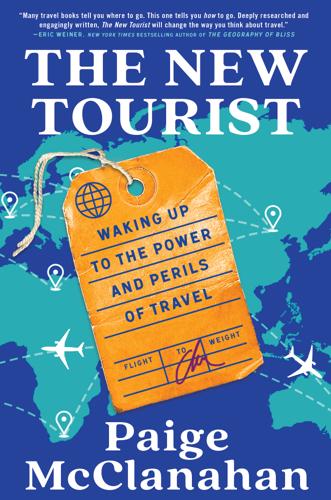
The New Tourist: Waking Up to the Power and Perils of Travel
by
Paige McClanahan
Published 17 Jun 2024
If someone travels more because her conscience has been assuaged by her purchase of offsets (which are probably invalid anyway), then the whole concept probably does more harm than good. David Victor, a codirector of the Deep Decarbonization Initiative at the University of California San Diego, said in an interview that the carbon offset market has been flooded with low-quality offsets, which has driven down the price of a carbon credit and made the whole system grossly ineffective at actually reducing the amount of CO2 being released into the atmosphere. “Offsets were a magic wand because they were inexpensive and they made people feel like they were doing something,” he said. “But they turned out to be almost entirely garbage.”30 One obvious alternative to carbon offsets is to stop flying.
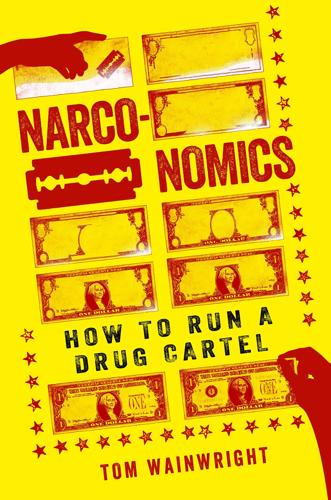
Narconomics: How to Run a Drug Cartel
by
Tom Wainwright
Published 23 Feb 2016
Its remaining supporters are confounded by the fact that some of today’s most successful firms have not been harmed by their lack of interest in sustainability, corporate citizenship, and so on. Ryanair, a budget airline based in Ireland, has conquered the European flight market despite being widely loathed and not seeming to care. Unlike other airlines, which offer passengers the chance to “offset” their pollution by buying carbon credits, Ryanair has no time for green campaigners. “We want to annoy the fuckers whenever we can. The best thing you can do with environmentalists is shoot them,” Michael O’Leary, its pugnacious boss, has said. Carlos Slim became the world’s richest man by milking his telecoms concessions for all they were worth, and giving away less of his fortune than other billionaires.

Capitalism Without Capital: The Rise of the Intangible Economy
by
Jonathan Haskel
and
Stian Westlake
Published 7 Nov 2017
A good example of the importance of leadership in an intangible age can be seen in the phenomenon sometimes called systems or systemic innovation. Elon Musk is sometimes described as a systems innovator, aspiring to develop new products in a number of related fields (electricity storage, solar power, electric cars) or in complex systems (space procurement, carbon credits). Systems innovation is also widely discussed in the not-for-profit sector, particularly as large-scale funders such as the Gates Foundation and Bloomberg Philanthropies seek to change whole systems at once, such as public health in developing countries or city government. Since even rich organizations are not usually big enough to directly control major economic systems, systems innovation relies on leadership: the ability to convince other organizations, networks of partners, and even competitors to do what the systems innovator wants.

Rigged: The True Story of an Ivy League Kid Who Changed the World of Oil, From Wall Street to Dubai
by
Ben Mezrich
Published 11 Aug 2008
If you don’t agree, please try to write an algorithm to predict the downward or upward movement in natural gas prices resulting from a pipeline explosion in Louisiana, or the reaction of oil prices to a picture of the president holding hands with the Saudi oil minister. Energy is one of the few things we trade with constant demand. You can stop buying jewelry when gold prices get too high, you can stop buying Google stock when it hits six hundred dollars . . . but it’s hard to stop driving to work and watching TV. Until we trade elements, air (carbon credits), and water, nothing like it exists. The DME is scheduled to trade its first contract in the second quarter of 2007. No one can predict whether the market will flourish or founder. It’s likely that, despite the fanfare, the contract will struggle in the early days as participants test out the liquidity.
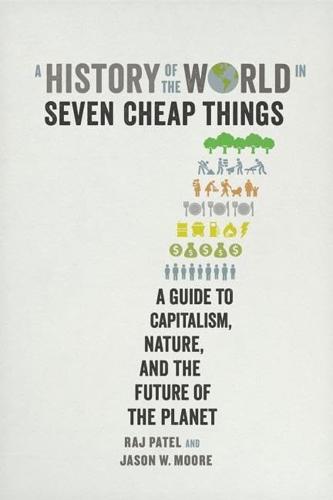
A History of the World in Seven Cheap Things: A Guide to Capitalism, Nature, and the Future of the Planet
by
Raj Patel
and
Jason W. Moore
Published 16 Oct 2017
We want to close with a discussion of the cheap in cheap fuel. The crisis of fuel isn’t necessarily a crisis of scarcity or overproduction. The shift away from fossil fuels isn’t the end of the regime of cheap energy. Indeed, the climate crisis has afforded an opportunity for finance to present itself as a mechanism of global salvation: it is through carbon credits, offsets, and permits to pollute the atmosphere that the atmosphere will be saved—or so we are told.91 This is where commoning can finally be ended—through the full financial externalization of collective responsibility, turning what need to be collective decisions on the fate of the commons into a financial product in a global market.

Everything Is Obvious: *Once You Know the Answer
by
Duncan J. Watts
Published 28 Mar 2011
Finally, some businesses would prefer to pay for the privilege of continuing to emit carbon by buying credits from those who prefer to cut back, where the price of the credits would depend on the overall supply and demand—just as in other markets.26 Market-based mechanisms like cap and trade do indeed seem to have more chance of working than centralized bureaucratic solutions. But market-based mechanisms are not the only way to exploit local knowledge, nor are they necessarily the best way. Critics of cap-and-trade policies, for example, point out that markets for carbon credits are likely to spawn all manner of complex derivatives—like the derivatives that brought the financial system to its knees in 2008—with consequences that may undermine the intent of the policy. A less easily gamed approach, they argue, would be to increase the cost of carbon simply by taxing it, thereby still offering incentives to businesses to reduce emissions and still giving them the flexibility to decide how best to reduce them, but without all the overhead and complexity of a market.

The Truth Machine: The Blockchain and the Future of Everything
by
Paul Vigna
and
Michael J. Casey
Published 27 Feb 2018
Out of this concept, Miller and a team that includes UCLA finance professor Bhagwan Chowdry and World Economic Forum oceans conservationist Gregory Stone came up with two special value tokens: the Ocean Health Coin and the Climate Coin. Those tokens would be issued to key stakeholders in the global climate problem, a mix of companies, governments, consumers, NGOs, and charities, who could use them to pay for a range of functions having to do with managing carbon credits and achieving emission and pollution reductions. The idea includes a reserve of tokens controlled by the World Economic Forum to manage the value of the global float of coins. The meat of the proposal involves a plan to irrevocably destroy some of the coins in reserve whenever international scientific bodies confirm that improvements in pollution and carbon emission targets have occurred.
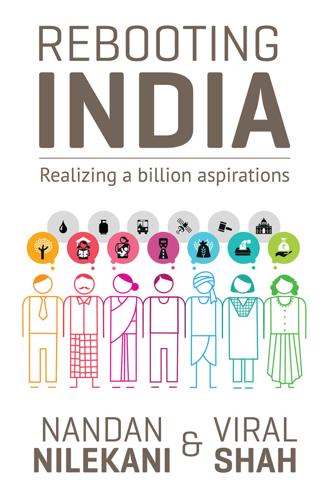
Rebooting India: Realizing a Billion Aspirations
by
Nandan Nilekani
Published 4 Feb 2016
They can optimize their power consumption patterns through the use of innovations like Nest that provide real-time information on power usage. Feed-in tariffs—where customers get paid for supplying energy to the grid, generated by the use of electric cars or rooftop solar panels, for example—can incentivize the use of renewable energy sources, and the concept of clean energy and carbon credits can be brought to consumers to promote the widespread adoption of energy-saving practices. When it comes to the organizational management of smart grids, India’s crumbling public-sector energy utilities, beset by inefficiency, corruption and heavy financial losses, are inadequate to shoulder the burden.

A New History of the Future in 100 Objects: A Fiction
by
Adrian Hon
Published 5 Oct 2020
During the ’20s, the government of Unified Korea tasked its top scientists, lawyers, and engineers to fix the country’s cripplingly slow and byzantine legal system, which reunification had only made worse. To simulate the outcome of any proposed solutions, they adapted a negotiation system used during the ASEAN (Association of Southeast Asian Nations) carbon-credit deadlock crisis, building it into the first recognizable negotiation agent. Many attribute the success of Unified Korea’s legal reforms to the negotiation agents, which were soon adapted to work in any number of countries and scenarios. More recently, negotiation agents have been improved so they can process and weigh vast quantities of data in a way that even an amplified team cannot.

Fuller Memorandum
by
Stross, Charles
Published 14 Jan 2010
It was directed at a variety of people, including a retired major general and sometime MI6 informer, whose dubious status was probably the deciding factor in keeping his ass out of an internment camp along with the rest of the Nazi-sympathizing Directorate of the British Union of Fascists--that, and his shadowy connections to occultists and mathematicians, his undoubted genius as a tactician and theorist of the arts of war, and the nuanced reports of his political officer, who figured his patriotism had a higher operator precedence than his politics. That man was F: Major-General J. F. C. "Boney" Fuller. He's been in his grave for nearly half a century, and would doubtless be spinning in it fast enough to qualify for carbon credits as an environmentally friendly power source if he could see us today in all our multi-ethnic anti-discriminatory splendor. But who cares? That is, indeed, the big-ticket question. Before the Laundry, things were a bit confused. You can do magic by hand, without computers, but magic performed by ritual without finite state automata in the loop--calculating machines, in other words--tends to be haphazard, unreliable, uncontrollable, prone to undesirable side effects, and difficult to repeat.
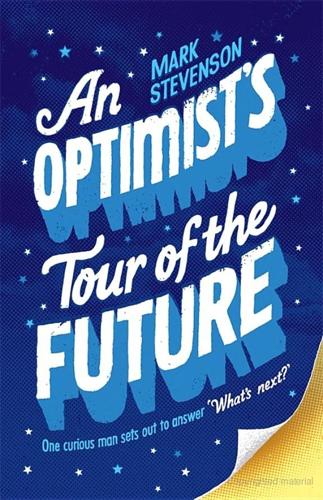
An Optimist's Tour of the Future
by
Mark Stevenson
Published 4 Dec 2010
But if you can pay them for the carbon, that gets them out of both holes – financial and emotional. The land improves, which is good for business, and they can tell pappy the change in management is to bring money in from something he never could have got paid for. It’s not that the old man was wrong at all, it’s just a new market: carbon.’ ‘But even without carbon credits, they can see the difference just looking over the fence, surely?’ I’m slightly incredulous. ‘Well, these are special Australian fences,’ says Tony. ‘They’re impervious to new ideas.’ For once, he’s not joking. ‘Yep, you’re never a prophet in your own dunghill,’ suggests Bruce sagely. One day later, two hundred and fifty miles south, and I’m in an argument with perhaps the smartest farmer in Australia.
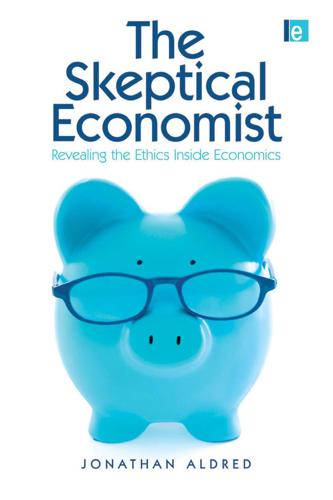
The Skeptical Economist: Revealing the Ethics Inside Economics
by
Jonathan Aldred
Published 1 Jan 2009
The mobile phone spectrum auctions and specially designed carbon trading markets only exist because economists invented them. So it is hardly surprising that economics works well in these contexts.3 They are selfcontained closed systems in which the decision makers involved have the time, ability and financial incentives to act like Homo economicus. When businesses and governments buy and sell carbon credits or mobile phone spectra, they have a great deal to gain or lose from the transaction and so devote considerable efforts to making the right decisions. They can call on expert advisers, often economists themselves. The decisions to be made, while complex, are made amenable to standard economic analysis because everyone knows the rules of the game, and everyone knows that everyone knows... and so on.
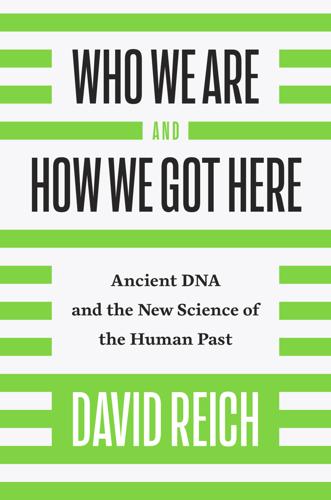
Who We Are and How We Got Here: Ancient DNA and the New Science of the Human Past
by
David Reich
Published 22 Mar 2018
They now number about fourteen hundred people and live in the Brazilian state of Rondônia.39 They have been relatively isolated, establishing formal relations with the government of Brazil only in the 1960s when road builders came through their territory. Since then, the Suruí have defended their land from deforestation, taken over coffee plantations, and reported illegal loggers and miners. They have sought representation from indigenous rights groups in the United States and claimed carbon credits for the greenhouse gases conserved through the rainforest they have protected. Another group belonging to the Tupí language family in which we found Population Y ancestry is the Karitiana. The Karitiana are discussed at the beginning of this chapter as one of the first Native American tribes to become active in protesting against genetic research—in their case because of concern that DNA samples had been taken from them in 1996 with a promise of improved access to health care that has never been realized.

Zucked: Waking Up to the Facebook Catastrophe
by
Roger McNamee
Published 1 Jan 2019
When I got around to the antitrust hypothesis, he offered to arrange meetings with the relevant economics professors at Yale. The department had considerable experience creating pricing models for transactions that did not involve currency. (A week later, a Yale economist would be awarded the Nobel Prize for pioneering work on carbon credits.) At Yale, I met with five economists, a political scientist, and a professor of law, all of whom had an interest. At this writing, the hard work has begun to create a model that represents the value transfer in the markets created by internet platforms, where one side is a barter transaction with no currency.

Break Through: Why We Can't Leave Saving the Planet to Environmentalists
by
Michael Shellenberger
and
Ted Nordhaus
Published 10 Mar 2009
The more steadfastly environmentalists ignore the macrodrivers of deforestation, the more desperately they propose technical solutions. Over the last few years, the conservation community has become increasingly excited by the prospects of motivating governments to protect their rain forests as a way to receive carbon credits through the Kyoto agreement. The idea is that countries such as Brazil would be able to price and sell their “ecological services” to the world. Nobody doubts that there is a value to keeping most of the Amazon forest intact. According to one World Bank report, for every hectare of forest destroyed, a hundred dollars in social and environmental benefits are lost—a figure calculated from estimates of particular ecosystem services, from wood products to tourism value to the sequestration of carbon to prevent global warming.51 And there is no shortage of creative ways to monetize the ecological services provided by standing forests, unobstructed rivers, and clean waterways.
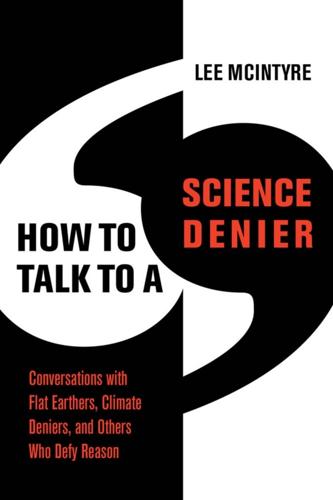
How to Talk to a Science Denier: Conversations With Flat Earthers, Climate Deniers, and Others Who Defy Reason
by
Lee McIntyre
Published 14 Sep 2021
It is one of those islands that are owned and operated by a hotel, where a visitor is treated to first-class service and some of the most beautiful sights you will ever see in your life. We were among those couples paying a shocking amount toward taxes for the sovereign wealth fund—and we also offset the entirety of our trip with carbon credits when we got back—so all of the money went to a good environmental cause. But I was there to work. My goal was to understand not just the physical but also the cultural effects of climate change, so I needed to be there firsthand. In addition to working with a marine biologist, I also chatted with native Maldivians who worked at the hotel, spoke with fishermen, and took a snorkeling excursion to see coral death in the middle of the Indian Ocean.
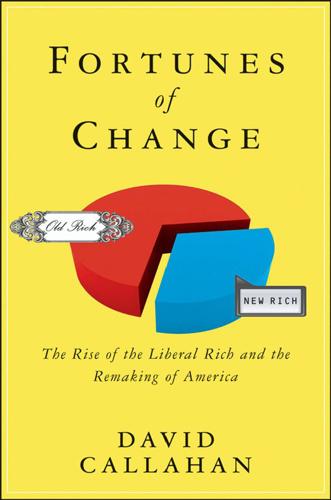
Fortunes of Change: The Rise of the Liberal Rich and the Remaking of America
by
David Callahan
Published 9 Aug 2010
That’s why 2007 and 2008 saw other private jet companies, such as Jets.com and V1 International, also start carbon offset programs. In a few years, or perhaps even before these words appear in print, it is likely that all jet charter companies will be doing the same thing, and many major corporations will also be buying carbon credits to offset the private jet use of their executives. Carbon-neutral jet travel not only feels good, but it is relatively inexpensive. According to one analysis, most private air travelers can fly carbon-neutral for only 1 percent of the total flying costs. Although private jet flying can run between $2,000 and $13,000 an hour, carbon offsets range from $7 to $60 an hour, and with more services popping up to assuage the ecoguilt of jet setters, calculating your carbon output and purchasing offsets are easier than ever.

What's Next?: Unconventional Wisdom on the Future of the World Economy
by
David Hale
and
Lyric Hughes Hale
Published 23 May 2011
An Unbridgeable Ideological Chasm Has Emerged between the Major Political Parties The Obama administration ended 2010 reconsidering the policies it had promoted during its first two years in office. It was on the verge of accepting Republican proposals to allow the Bush tax cuts that were enacted during 2003 to continue for everyone rather than hiking marginal income tax rates on Americans earning over $250,000 per annum. It abandoned proposals to introduce a cap-and-trade program for carbon credits. It will instead attempt to regulate carbon emissions through actions by the Environmental Protection Agency. The Republican victory could allow progress on one type of policy initiative. It will increase the odds of Congress enacting the free trade agreements (FTAs) negotiated by the Bush administration with South Korea, Colombia, and Panama.
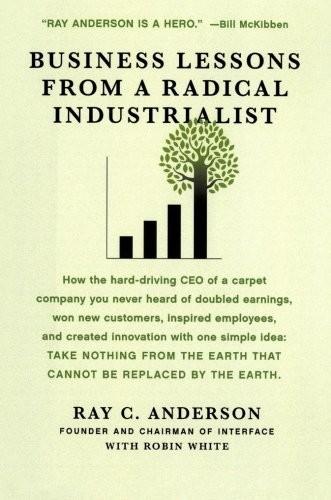
Business Lessons From a Radical Industrialist
by
Ray C. Anderson
Published 28 Mar 2011
Emory University, here in Atlanta, asked itself a very similar question, but commissioned a report to answer the question, appointed an expert advisory panel, of which Interface was a member, and came up with a range of solutions that they are systematically implementing as budgets allow. Don’t get me wrong. Interface uses offsets, and the Kyoto Protocol sanctions them, in principle, as a good way for governments and private companies to earn carbon credits that can even be traded on a carbon market. Kyoto established the Clean Development Mechanism (CDM), which validates and measures projects, no matter where they are located, to ensure that they produce authentic benefits that would not otherwise have been realized. So when carbon cap-and-trade comes into force, offsets will definitely play a big role.
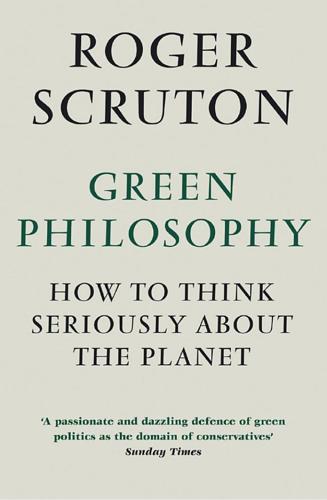
Green Philosophy: How to Think Seriously About the Planet
by
Roger Scruton
Published 30 Apr 2014
This, rather than pursuing a policy of ‘cap and trade’, which allows nations effectively to set their own limits for carbon emissions, is directed towards technological innovation. The Kyoto Clean Development Mechanism was intended to establish an incentive structure that would encourage either private firms or governments to devote the resources needed to develop a genuinely renewable source of clean energy.299 However, the system of carbon credits proposed, besides opening the way to corrupt deals and evasions, would have inflicted a cost on the United States that the Senate was not prepared to underwrite. The history of post-colonial Africa suggests that, should the continent overcome its stagnation and experience the industrial revolution that has occurred elsewhere, the chances of controlling the resulting emissions by treaty are next to zero.

Lonely Planet Kauai
by
Lonely Planet
,
Adam Karlin
and
Greg Benchwick
Published 18 Sep 2017
Then, at each place, keep your sightseeing to within that region. Along with saving on unnecessary fuel costs this will allow you to really plug in to your immediate surroundings, and most likely will result in a richer, more local travel experience. Consider offsetting the carbon of your flight to the island by buying carbon credits. There is a bunch of companies now doing it and you can even arrange it through most major airlines. Some top offset companies include www.terrapass.com, www.myclimate.org and www.carbonfund.org. Food & Accommodations When it comes to eating, where you buy is as important as what you buy.
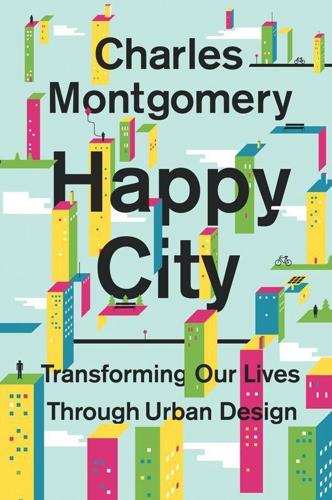
Happy City: Transforming Our Lives Through Urban Design
by
Charles Montgomery
Published 12 Nov 2013
In 2000 Peñalosa and Eric Britton were called to Sweden to accept the Stockholm Challenge Award for the Environment, for pulling 850,000 vehicles off the street during the world’s biggest car-free day. Then the TransMilenio bus system was lauded for producing massive reductions in Bogotá’s carbon dioxide emissions.* It was the first transport system to be accredited under the UN’s Clean Development Mechanism—meaning that Bogotá could actually sell carbon credits to polluters in rich countries. For its public space transformations under Mayors Peñalosa, Antanas Mockus, and their successor, Luis Garzón, the city won the Golden Lion prize from the prestigious Venice Architecture Biennale. For its bicycle routes, its new parks, its Ciclovía, its upside-down roads, and that hugely popular car-free day, Bogotá was held up as a shining example of green urbanism.

The Windup Girl
by
Paolo Bacigalupi
Published 15 Sep 2009
I don't want them here. Not anymore." Hock Seng tries to tell if the farang is joking. He smiles hesitantly. "It is Royal Mandate. One might as well wish to replace the Environment Ministry." "There's a thought." Mr. Lake laughs. "I could team up with Carlyle & Sons and start complaining every day about taxes and carbon credit laws. Get Trade Minister Akkarat to take up our cause." His gaze rests on Hock Seng. "But that's not the way you like to operate, is it?" His eyes become abruptly cold. "You like the shadows and the bargaining. The quiet deal." Hock Seng swallows. The foreign devil's pale skin and blue eyes are truly horrific.

Mastering Private Equity
by
Zeisberger, Claudia,Prahl, Michael,White, Bowen
,
Michael Prahl
and
Bowen White
Published 15 Jun 2017
At Condor Travel, Peru’s leading inbound tourism operator, the business provides market opportunities for a large number of local micro-enterprises that would not otherwise be able to reach customers and promote their services. It also now offers U.S. and European eco-tourists travel packages that come with carbon credits to mitigate deforestation in the Tambopata National Reserve in the Amazon Basin. Saving the planet or smart marketing? And at Crossland Logistics, a leading cross-border trucking operator in Thailand, the executive team adjusted driver compensation levels to match industry standards and hired alternate drivers directly on its payroll.

The Controlled Demolition of the American Empire
by
Jeff Berwick
and
Charlie Robinson
Published 14 Apr 2020
This creates a marketplace for these carbon taxes to be bought and sold, so who gets involved when imaginary widgets are changing hands for billions of dollars? Wall Street, of course. And who is the poster child for reckless Wall Street speculation and fraud? Enron. And how was Enron scamming the world? Through selling fraudulent carbon credits, and everyone knows how that turned out. The current version of Cap & Trade is more like a dress rehearsal for what is going to be rolled out worldwide in the coming decade unless sanity is finally reintroduced back into society and the mainstream media. Not That Kind of Green The Green Climate Fund is a new global fund created to support the efforts of developing countries to respond to the challenge of climate change.

The Rational Optimist: How Prosperity Evolves
by
Matt Ridley
Published 17 May 2010
The way to choose which of these technologies to adopt is probably to enact a heavy carbon tax, and cut payroll taxes (National Insurance in Britain) to the same extent. That would encourage employment and discourage carbon emissions. The way not to get there is to pick losers, like wind and biofuel, to reward speculators in carbon credits and to load the economy with rules, restrictions, subsidies, distortions and corruption. When I look at the politics of emissions reduction, my optimism wobbles. The Copenhagen conference of December 2009 came worryingly close to imposing a corruptible and futile system of carbon rationing, which would have hurt the poor, damaged ecosystems and rewarded bootleggers and dictators.

Sixty Days and Counting
by
Kim Stanley Robinson
Published 27 Feb 2007
“Still, it’s hard to imagine them sacrificing that much land.” “True. But clearly there’s going to be something like carbon cap credits set up. Some kind of sea water credits, given to countries for taking up sea water. Maybe even combine it with carbon trading, so that taking up sea water earns carbon credits. Or funding for desalination plants on the basin’s new shorelines. Or whatever. Some kind of compensation.” Diane said, “I suppose we could arrange a treaty with them.” Later they worked on the Antarctic aspect of the plan. The dry basins of the world didn’t have enough capacity to keep sea level in place anyway, so they needed to push the Antarctic idea too.
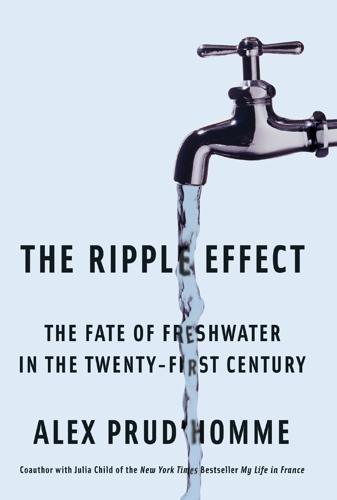
The Ripple Effect: The Fate of Fresh Water in the Twenty-First Century
by
Alex Prud'Homme
Published 6 Jun 2011
In France, Italy, and Germany, governments and industry have partnered to educate the public: large multicolored containers at supermarkets or in town centers accept a wide range of products to be recycled by a network of advanced recycling plants, and compared to the five-cents-a-bottle return fee paid by a few states in America, financial incentives to recycle are much higher in Europe. “If they can do it there, why can’t we do the same here?” American activists have demanded. US beverage companies have responded with recycling initiatives, by purchasing carbon credits, and by developing thinner bottles that use less plastic. Although biodegradable, corn-based plastic bottles exist, their shelf life is limited, and they tend to go sot in the sun. For better and for worse, PET lasts almost infinitely. After growing at a rapid clip, about 5 to 15 percent a year, bottled-water sales in the United States declined for the first time in thirty years in 2008.

Extreme Money: Masters of the Universe and the Cult of Risk
by
Satyajit Das
Published 14 Oct 2011
They pointed out that strictly speaking BP was not entirely a British company, as 30 percent of its shares were held by U.S. investors. When President Obama sought a temporary suspension of deep-water drilling in the Gulf of Mexico, oil companies argued the destruction of the eco-system of business. Financial considerations exculpated one of the biggest environmental disasters in history. Bankers proposed creating tradable carbon credits to combat climate change. The credits would give businesses the right to pollute up to a specified level. The real driver was that banks could trade the credits, earning profits. John Maynard Keynes anticipated the environmental debate: “We are capable of shutting off the sun and the stars because they do not pay a dividend.”
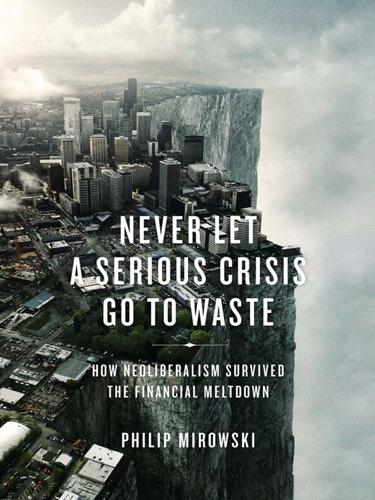
Never Let a Serious Crisis Go to Waste: How Neoliberalism Survived the Financial Meltdown
by
Philip Mirowski
Published 24 Jun 2013
The reason this array qualifies as neoliberal is twofold: initially, they were all proposals originating from within the array of think tanks and academic units affiliated with the Neoliberal Thought Collective; and then, if and when they come to be deployed in tandem, the net consequence is to leave the entire problem to be solved, ultimately not by the state, but rather by the market. The promotion of denialism buys time for the other two options; the financialization of carbon credits gets all the attention in the medium term, while appeals to geoengineering incubate in the wings as a techno-utopian deus ex machina to swoop down when the other options fail. At each step along the way, the neoliberals guarantee their core tenet remains in force: the market will arbitrate any and all responses to biosphere degradation, because it knows more than any of us about nature and society.

The Making of Global Capitalism
by
Leo Panitch
and
Sam Gindin
Published 8 Oct 2012
Even when states committed in 2009 to stimulate their economies, they felt impelled at the same time to lay off public-sector workers or cut back their pay, and to demand that bailed-out companies do the same. And while blaming the volatile derivatives market for causing the crisis, states promoted derivatives trading in carbon credits in the hope that green capitalism would provide a two-for-one remedy for the global climate and economic crises. In the context of such readily visible irrationalities, a strong case can be made that, if jobs and the communities that depend on them are to be saved in a way that will convert production and distribution to conform with ecologically sustainable priorities, there must be a break with the logic of capitalist markets rather than the use of state institutions to reinforce them.

Lonely Planet Norway (Travel Guide)
by
Lonely Planet
and
Donna Wheeler
Published 1 Apr 2015
Climate Change Global warming is by no means a solely Norwegian problem, but few countries have committed to doing as much about it as Norway. In 2007 the Norwegian government promised to 'be at the forefront of the international climate effort' and announced plans to become 'carbon neutral' and cut net greenhouse gas emissions to zero by 2050. This will mostly involve offsetting its annual carbon dioxide emissions by purchasing carbon credits on international markets. The government also agreed to cut actual emissions by 30% by 2030. Around 98% of Norway's electricity supplies come from renewable (primarily hydro power) sources, with fossil fuels accounting for just 2%. Norway also has targeted tax regimes on carbon dioxide emissions, and allocates billions of kroner to carbon dioxide capture and storage schemes and climate-related initiatives, both within Norway and abroad.

Hunger: The Oldest Problem
by
Martin Caparros
Published 14 Jan 2020
Some land is used to grow what is now called “flex crops,” which have multiple uses, such as for human or animal consumption, industrial raw materials, or fuel. Those that offer the most options are soy, sugar cane, corn, and palm. The remaining third is split among lumber and flowers for that strange contemporary perversion that consists of preserving more or less virgin forests to generate carbon credits, or rather, to set aside green swaths of unused terrain to compensate for the greenhouse gas emissions produced by the factories in the wealthy countries. These regions remain perfectly poor, unproductive, unusable for their inhabitants other than to pay for the environmental waste of those who are earning more and more money.
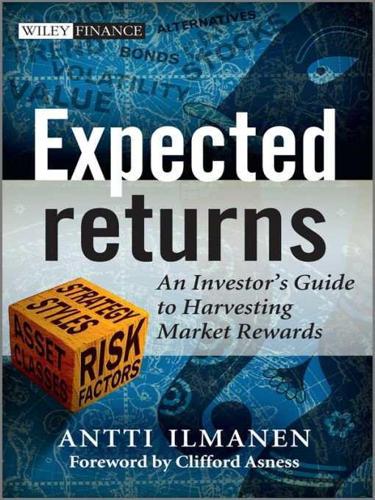
Expected Returns: An Investor's Guide to Harvesting Market Rewards
by
Antti Ilmanen
Published 4 Apr 2011
With hindsight, the period 2001–2007 may be viewed as the golden age of alternatives. Beyond the big four, the list of alternatives has grown and become increasingly diverse. It includes infrastructure, timber, and farmland; art and other collectibles (fine wines, rare coins, stamps); and more novel securities such as catastrophe bonds, carbon credits, intellectual property rights, viatical or life insurance settlements, longevity swaps, and others. If hedge funds can be characterized as an asset class, then the list of alternatives may be extended to include managed futures (typically momentum-oriented commodity-trading advisors or CTAs), global tactical asset allocation managers (typically value-oriented investors), active FX, volatility trading, alternative betas and hedge fund replication, as well as investments focused on corporate governance, sustainable development, and shareholder activism.
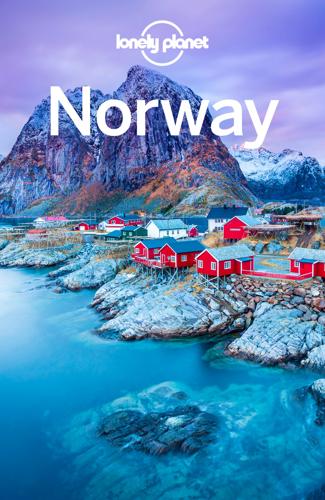
Lonely Planet Norway
by
Lonely Planet
In 2007 the Norwegian government promised to 'be at the forefront of the international climate effort' and announced plans to become 'carbon neutral' and cut net greenhouse gas emissions to zero by 2050. The country aims also to only sell electric cars by 2025. This will mostly involve offsetting its annual carbon dioxide emissions by purchasing carbon credits on international markets. The government also agreed to cut actual emissions by 40% by 2030. Already 100% of Norway's electricity supplies come from renewable (primarily hydro power) sources. Norway also has targeted tax regimes on carbon dioxide emissions, and allocates billions of kroner to carbon dioxide capture and storage schemes and climate-related initiatives, both within Norway and overseas.

The Stack: On Software and Sovereignty
by
Benjamin H. Bratton
Published 19 Feb 2016
Among other things, the financial crisis is a crisis of addressability, a de-addressing of things, and one that continues consolidating a shift within global market economics (when not also collapsing them). We can only anticipate what forms of high weirdness will ensue, as the paired computerization of matter-into-monies (i.e., carbon credits trading, where the value of money is itself measured in carbon) and monies-into-virtuality (i.e., the light pulses of high-speed trading) continues to evolve and accelerate.8 New addressing schemes to locate and coordinate instances of value are multiplying, both as generic currency (bitcoin blockchains) and as platforms for brokering things-with-value (various sharing economy schemes).

The Quest: Energy, Security, and the Remaking of the Modern World
by
Daniel Yergin
Published 14 May 2011
It was not that Putin was convinced of the risks from climate change; in fact, he had mused that a few degrees greater warmth would be welcomed in Siberia and would help Russian agriculture—and reduce the need for fur hats and fur coats. The Russian signature was seen as a trade in Russia’s quest for membership in the World Trade Organization. Additionally, Russia, with its reduced industrial output, could earn substantial revenues from selling “hot air” in the form of carbon credits.8 So Kyoto was now in business. But how to establish the actual markets for clearing trades in carbon? As it turned out, work on a prototype had been going on for over a decade. Among those at the 1992 Rio Earth Summit conference was Richard Sandor, an economist, consultant, and part-time professor at Northwestern University.
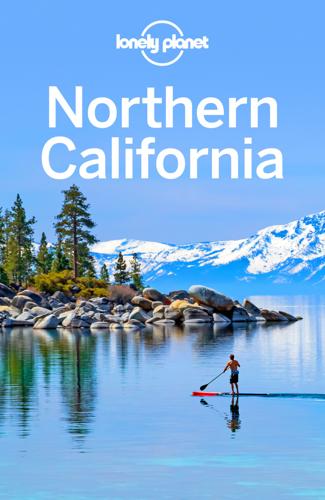
Northern California Travel Guide
by
Lonely Planet
CALIFORNIA'S CAP & TRADE In October 2011 California lawmakers adopted a cap-and-trade system for air emissions, in order to help the state achieve its ambitious goals to reduce greenhouse gas by 2020 and become a leader in climate policy. The complex market system fixes a price on heat-trapping pollution by California’s dirtiest industries – coal, oil and manufacturing – and allows them to trade carbon credits. Beginning in 2012, the state’s largest carbon emitters were required by law to meet the caps or buy credits. The program, originally endorsed by former governor Arnold Schwarzenegger, has struggled with a series of legal challenges and at times faced low demand in the face of uncertainty about the future.

Ireland (Lonely Planet, 9th Edition)
by
Fionn Davenport
Published 15 Jan 2010
Somehow, the fact that in 2007 Ireland’s carbon footprint was 5.0 global hectares per person – more than double the global average – didn’t really have the kind of impact the European Environment Agency hoped it would have, which meant that the country would have to pay for its emissions, a total of 3.6 million tonnes of carbon per year. Enter the economic collapse of 2008–9. All of a sudden, production has dropped across a range of industries and the Environmental Protection Agency has altered its forecast, guessing that the country would be liable for about half the amount of carbon credits, between 1.3 million and 1.8 million tonnes of carbon. Such improvements notwithstanding, Ireland will still struggle to meet its obligations under the Kyoto Protocol and the EU’s own binding targets, scheduled for 2020. The real saving grace for the small band of eco-activists has been the queue, which has done more than an Al Gore movie to remind the Irish that life needs to get a little more sustainable.